June 7, 2023
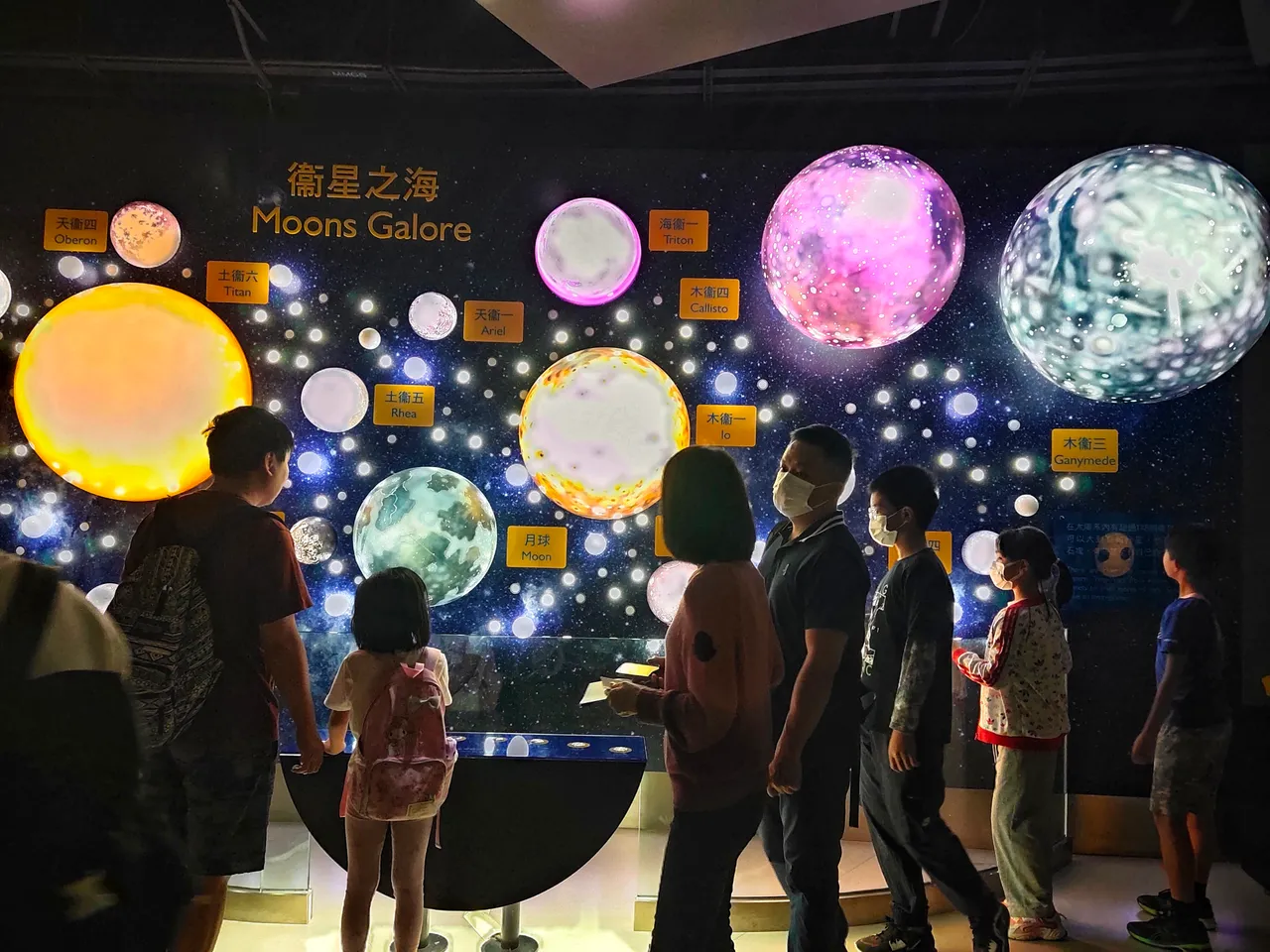
I've been yearning to explore the Space Museum since I learned about it, but my plan has always been compromised. One national holiday came, and I was too lazy to go to the countryside, so I visited Tsim Sha Tsui where the Space Museum is located. Children aren't just those who like visiting this place, but even adults as well.
Perhaps, you've seen this architecture before in one of my blogs taken in Tsim Sha Tsui. It is one of the most notable attractions because it resembles an egg whose half-part seems buried in the ground. This building is the popular Space Museum located near the TST waterfront next to the HK Museum Of Art which I featured in my travel blog before.
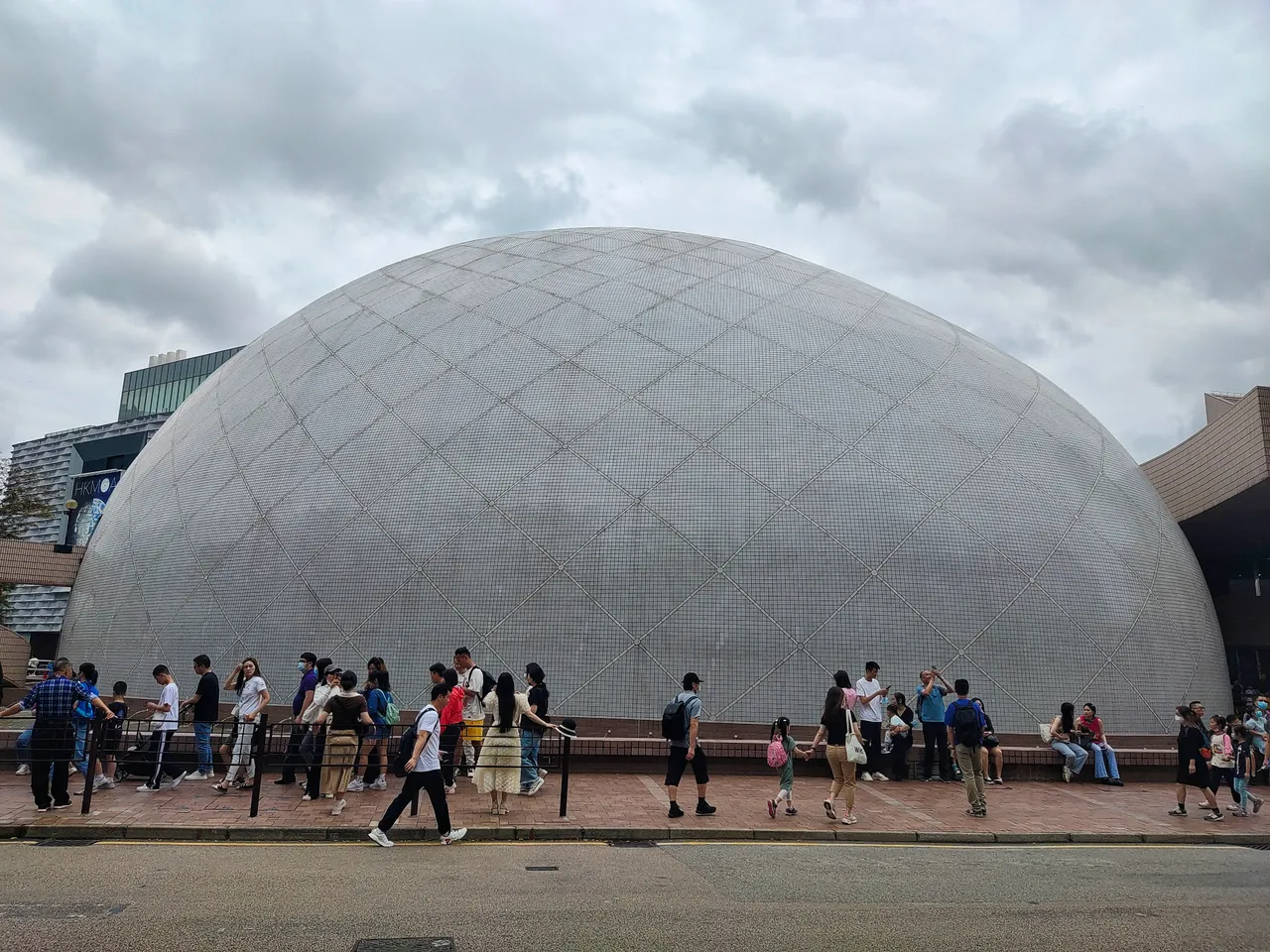
Sometimes, the back part of the architecture is painted with cute figures like this dinosaur. This was taken last Chinese New Year 2022.
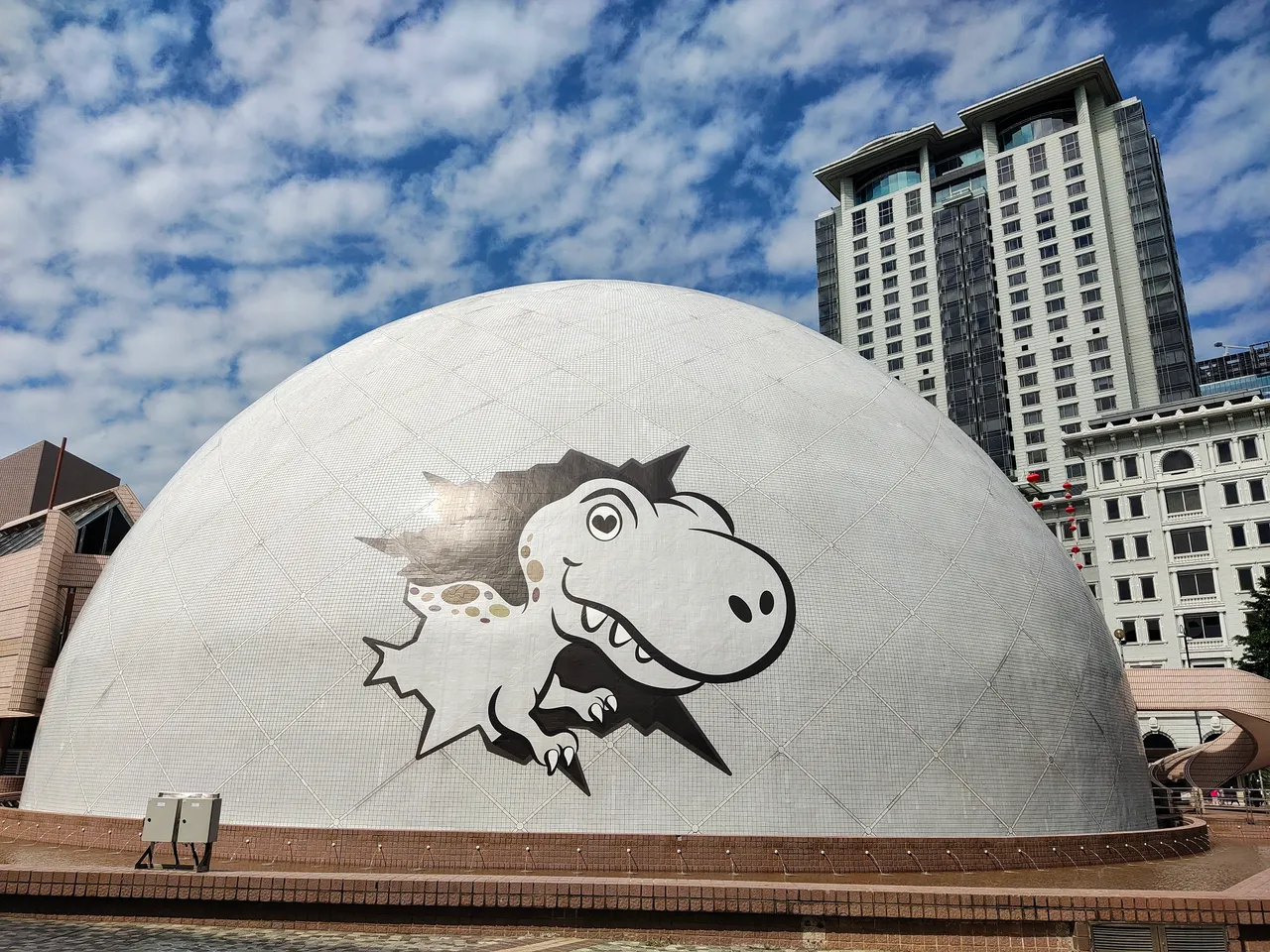
If you are interested in space science and astronomy, then this museum is definitely the best place to explore space. And you'll be surprised if I say that, it only takes HK$10 or US$1.28 to explore the Space Museum! That is so worth it which will take you to the Cosmos and Space Exploration halls of the museum.

There are two ways to get tickets, either you buy them over the counter located near the entrance outside, or at the machines inside. However, this area usually has long lines compared to the ticket booth outside.
 |  |
|---|
There are two Halls in this museum, one for Space Exploration and the Cosmos. A Space Theater is also located here but requires a different admission fee to watch the featured films which are more about Science.
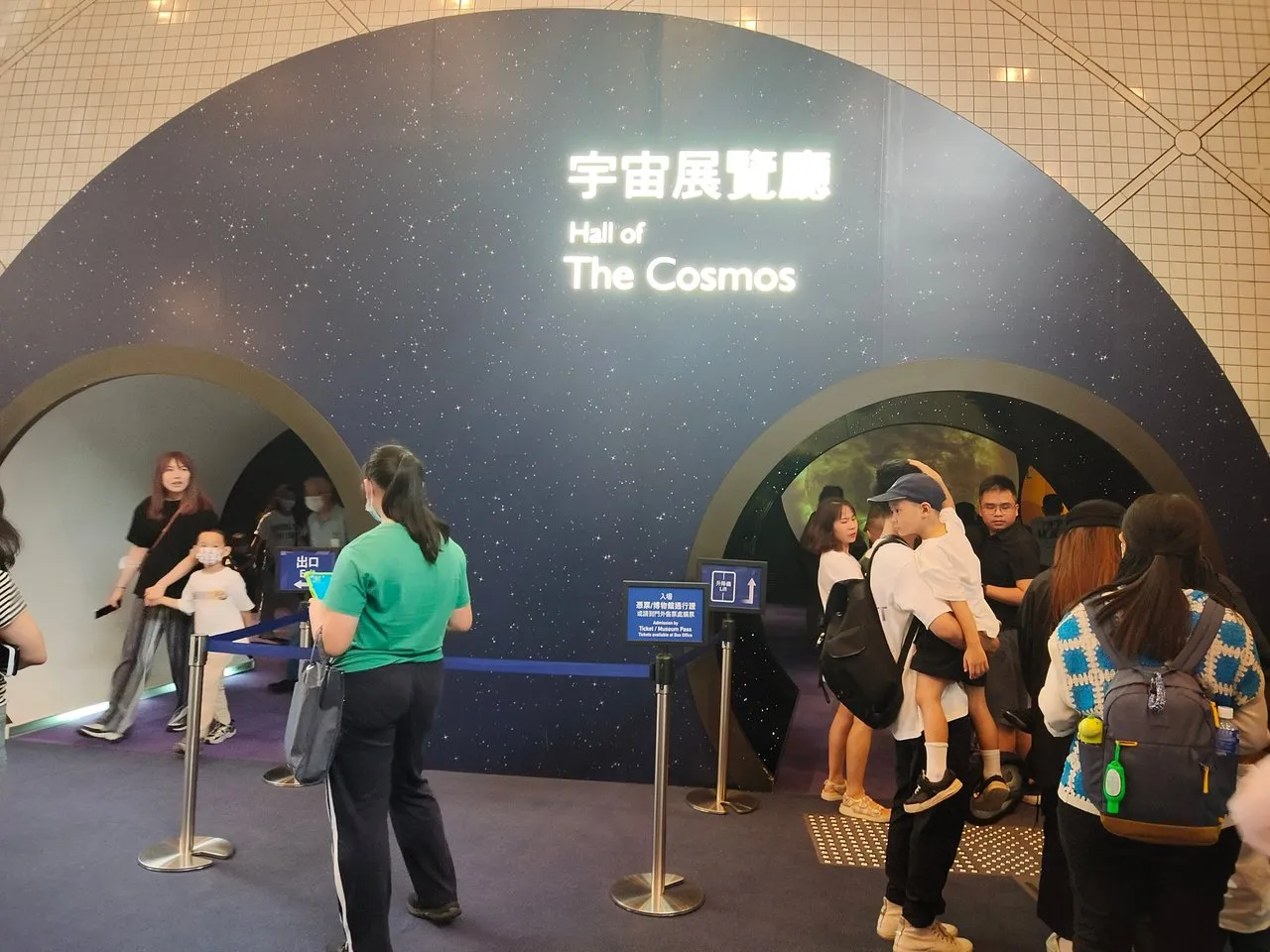 |  |
|---|
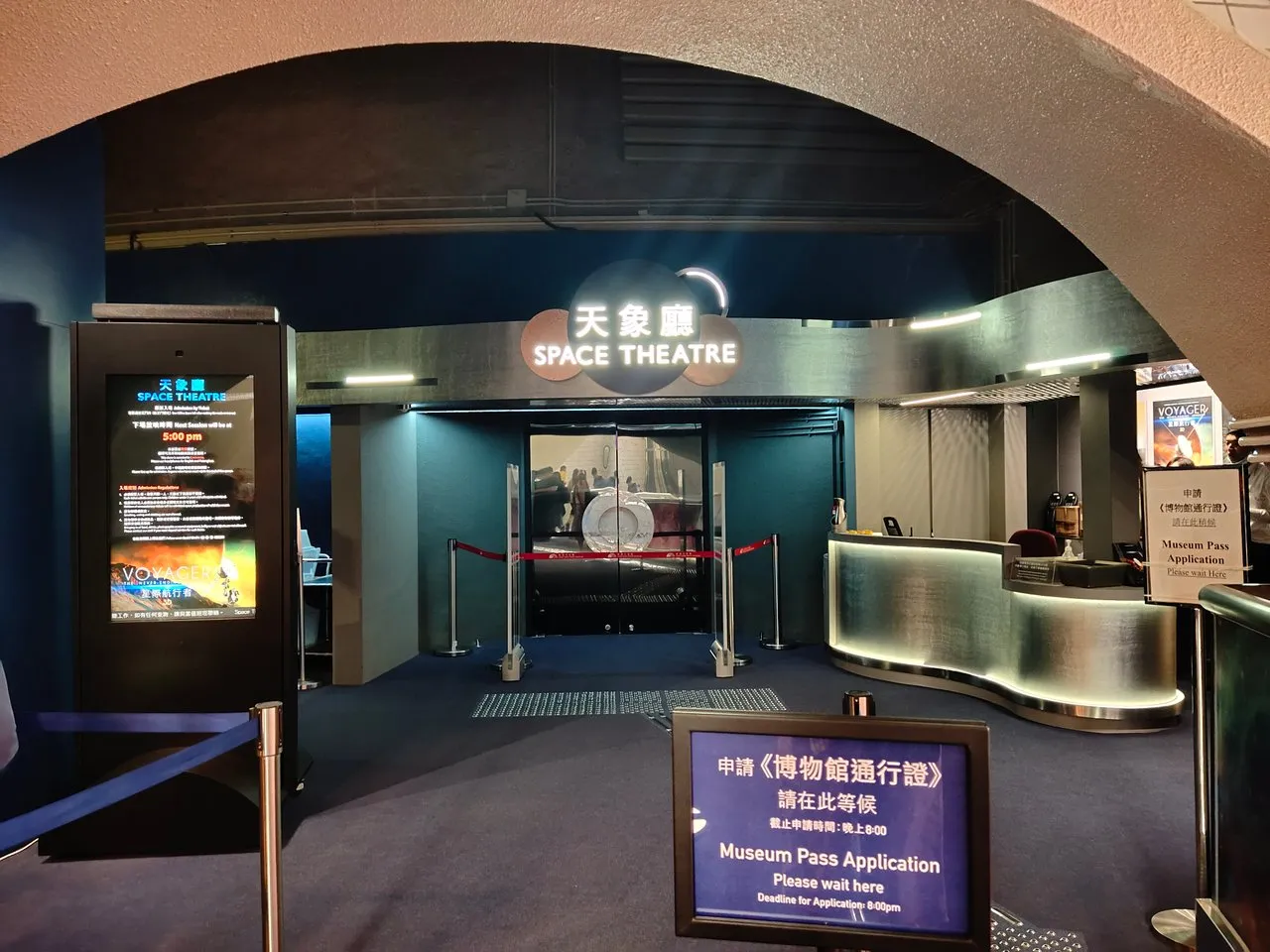
I entered the Hall of Cosmos and the first thing I noticed when I got in was the number of kids. It was Labor Day when I explored the museum, so the crowd was expected. Schools usually make this a place to conduct school trips to allow kids to learn about and see exhibitions about astronomy and space science.
A seeming ball of fire is the first attraction upon entering the hall. By the look of it, you'll recognize what it is, of course, the center of our Solar System, the Sun. That kid looked fascinated as it glows like a real sun.
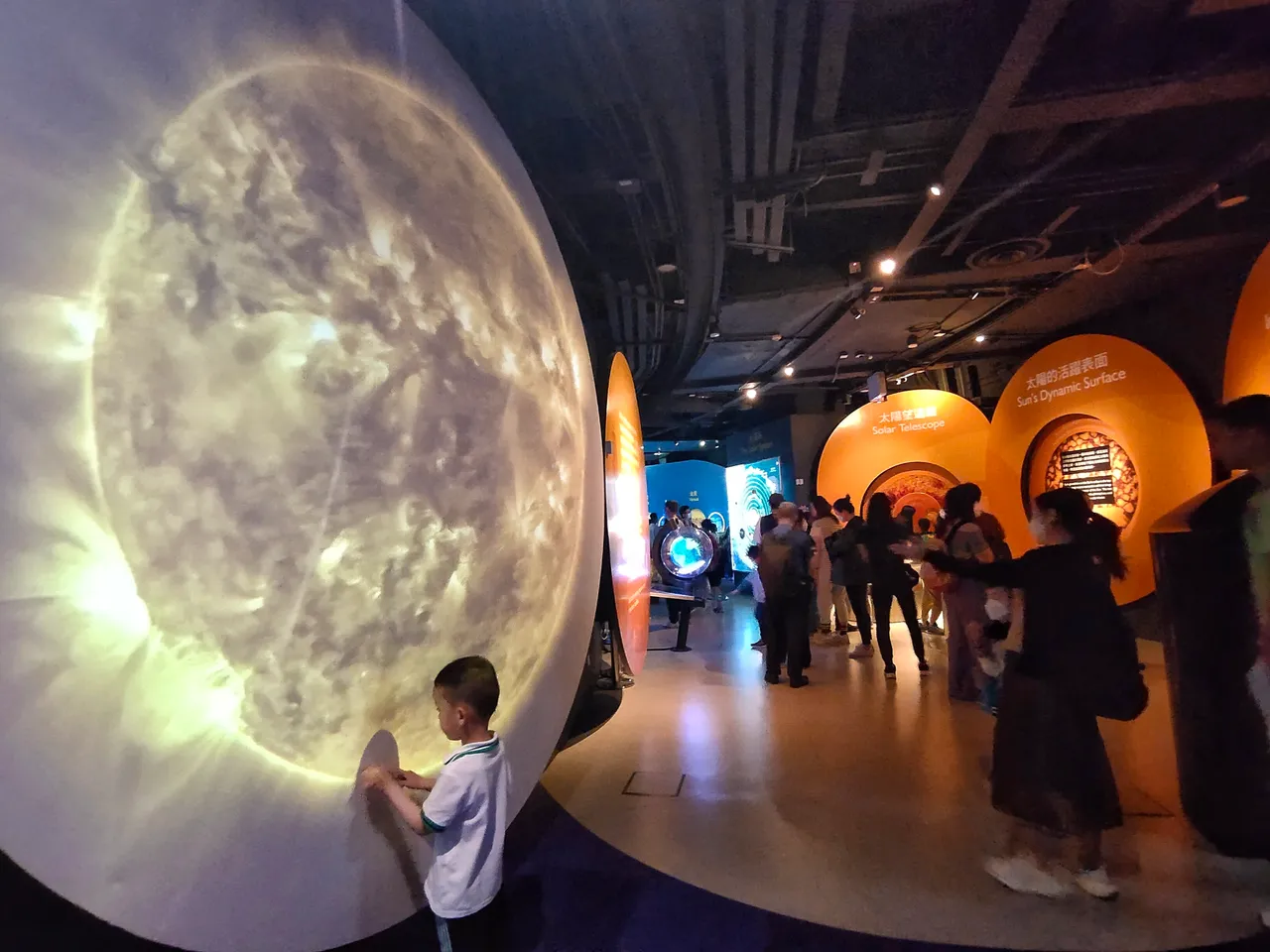
People do not only explore this museum for nothing. They will learn a lot as information is written on walls and at every exhibition site.
Welcome to Outer Space! I mean, the Hall of Cosmos which gives you a vibe as if you are in outer space. Suspended overhead are the complete main planets, including, of course, our dear mother Earth, which is so notable for its appearance.



The next part that caught my attention and the place I've been yearning to see was the Moon Galore. That's when I learned about other moons apart from our Moon on the Earth. These are the moons of different planets in the solar system.
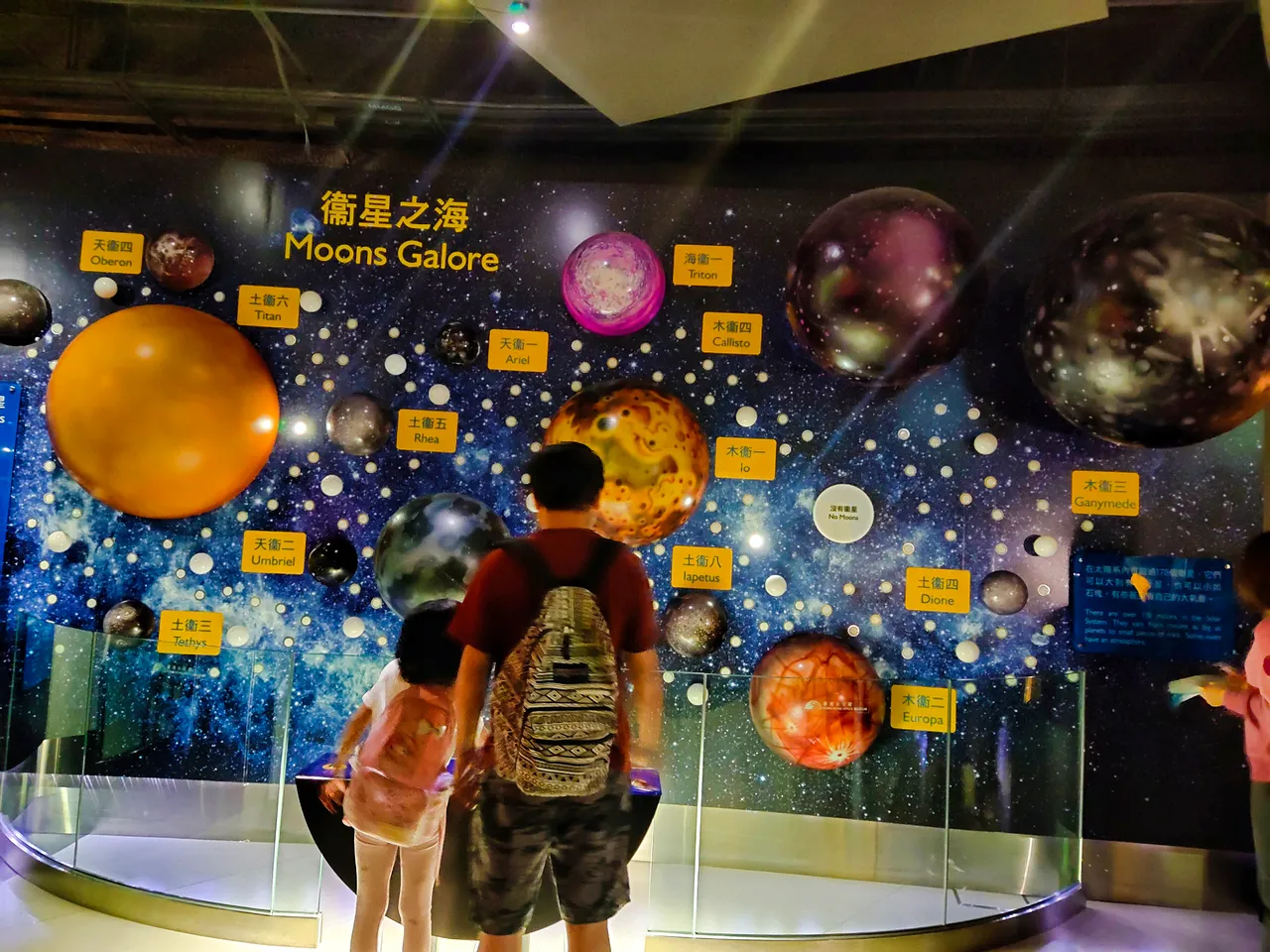
Do you know the number of moons in the Solar System?
According to NASA, there are 290 familiar moons: 1 for Earth; 2 for Mars; 95 for Jupiter; 146 for Saturn; 27 for Uranus; 14 for Neptune; and 5 for dwarf planet Pluto.
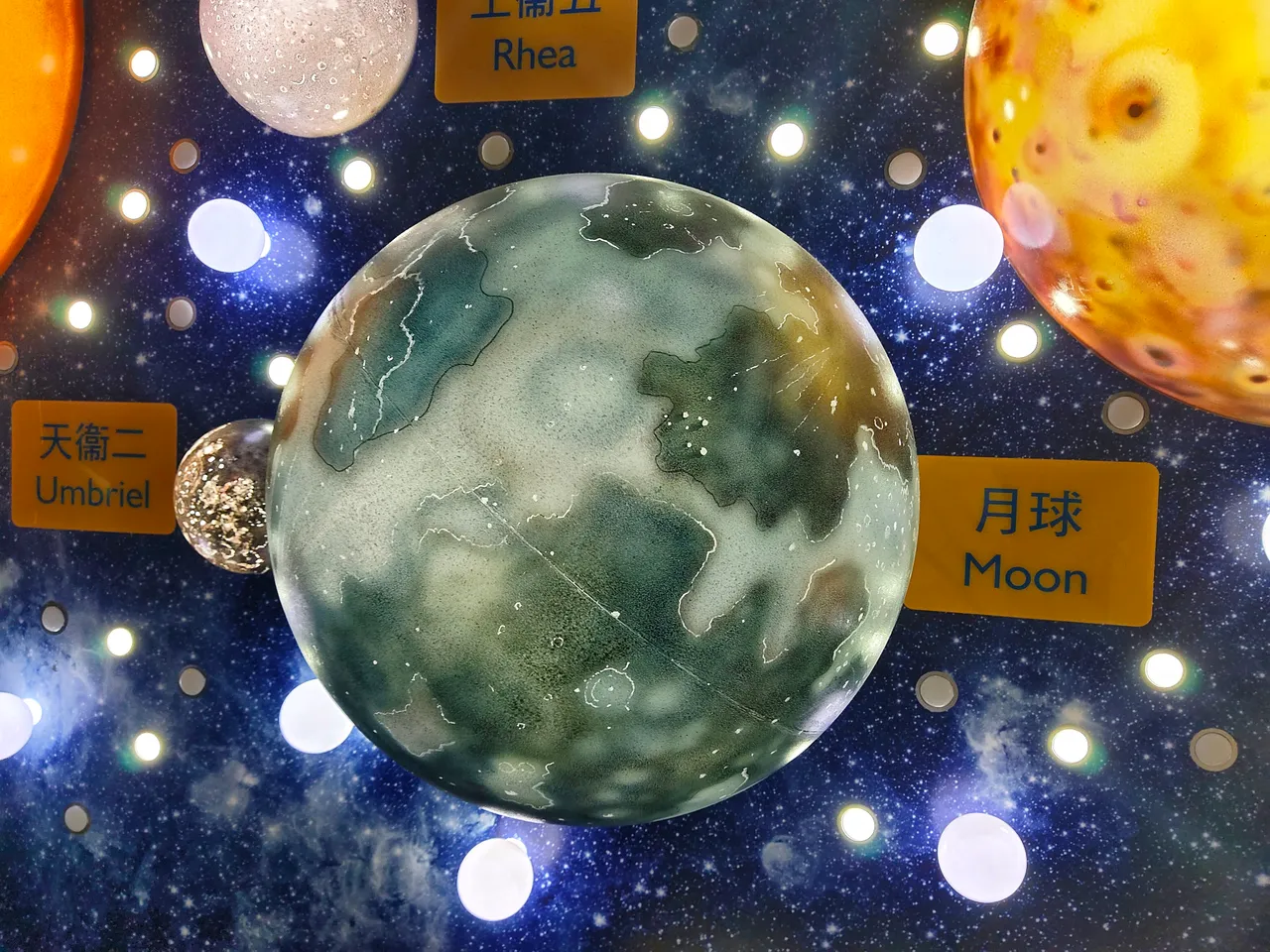
That is amazing! Out of 290 moons, the 10 largest moons are exhibited here: Ganymede, Titan, Callisto, Lo, Moon, Europa, Triton, Titania, Rhea, Oberon, and other moons. I wondered though where they got those names, or who named moons.

Familiarizing all the planets in Solar System is easier for kids with the help of this board.

Meanwhile, this lane has weights that one could lift to know the amount of gravity on each planet. If my memory serves me right, the planet with the heaviest amount of gravity was Jupiter.


There are different interactive exhibitions allowing visitors, especially kids, to try displays and learn information at the same time, such as solving Puzzle Planets, turning the globe to know the Light Speed, and other presentations.

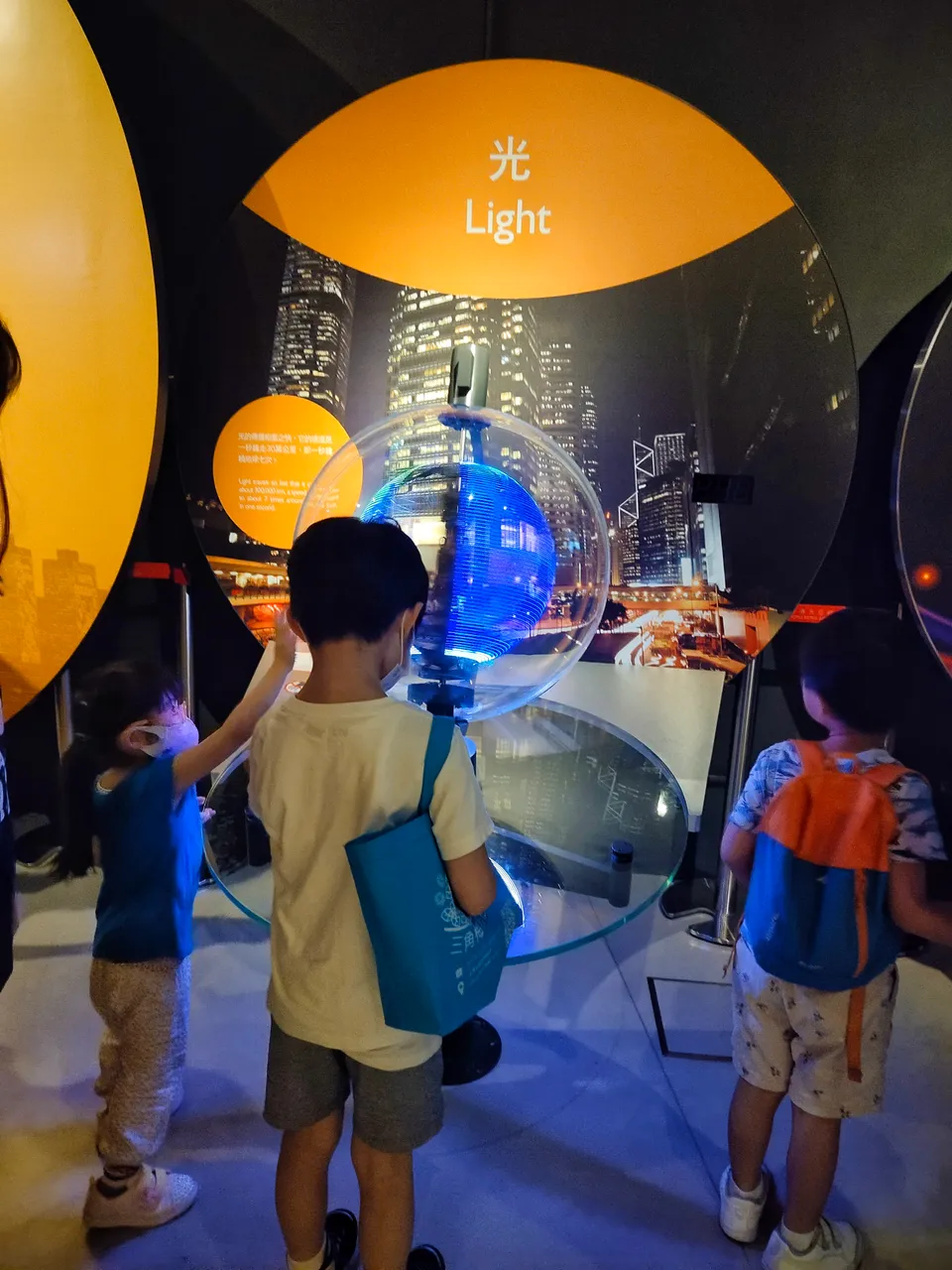 | 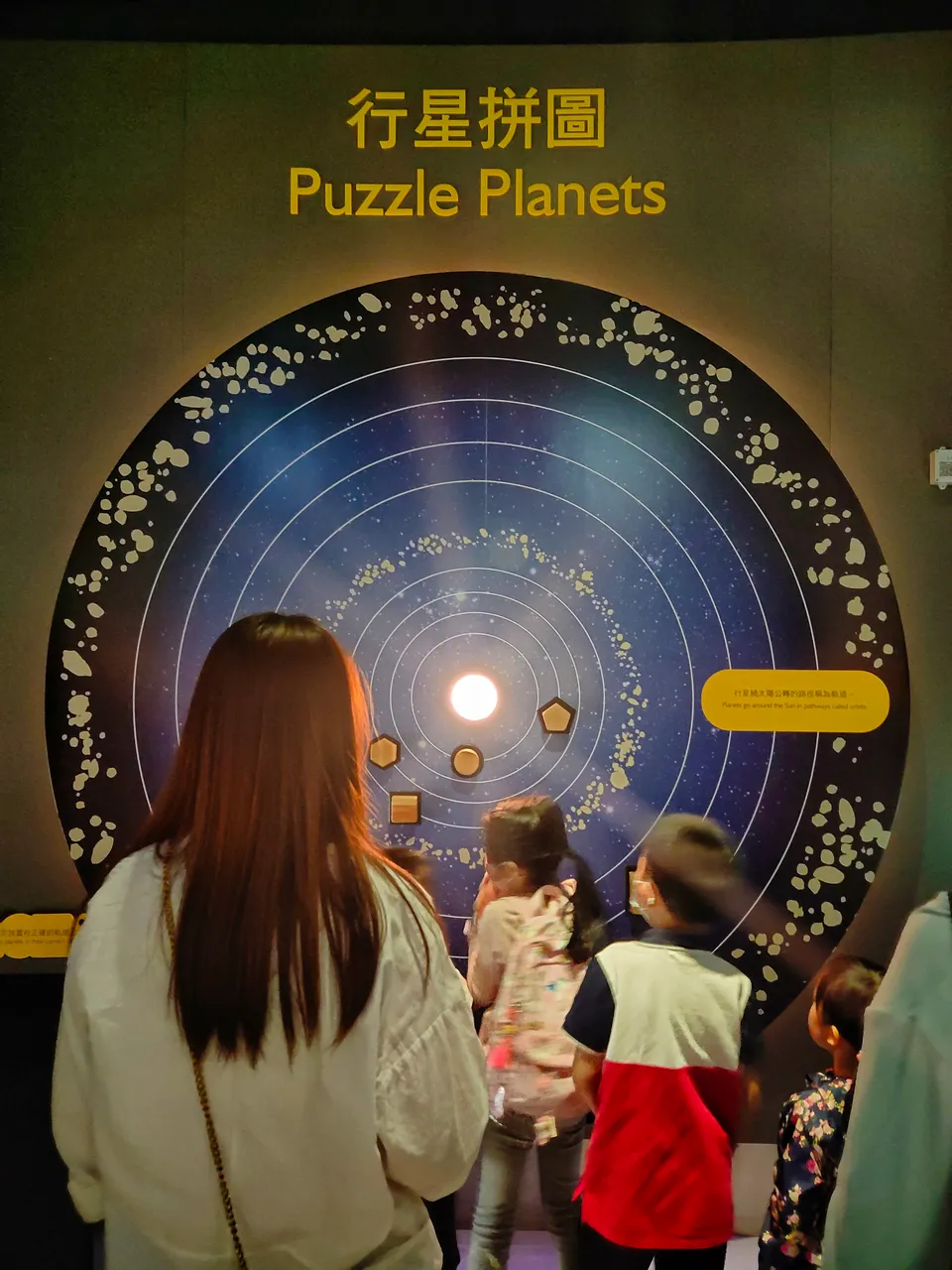 |
|---|
This part shows the Solar Telescope, Sun's Dynamic Surface, and Inside the Sun.
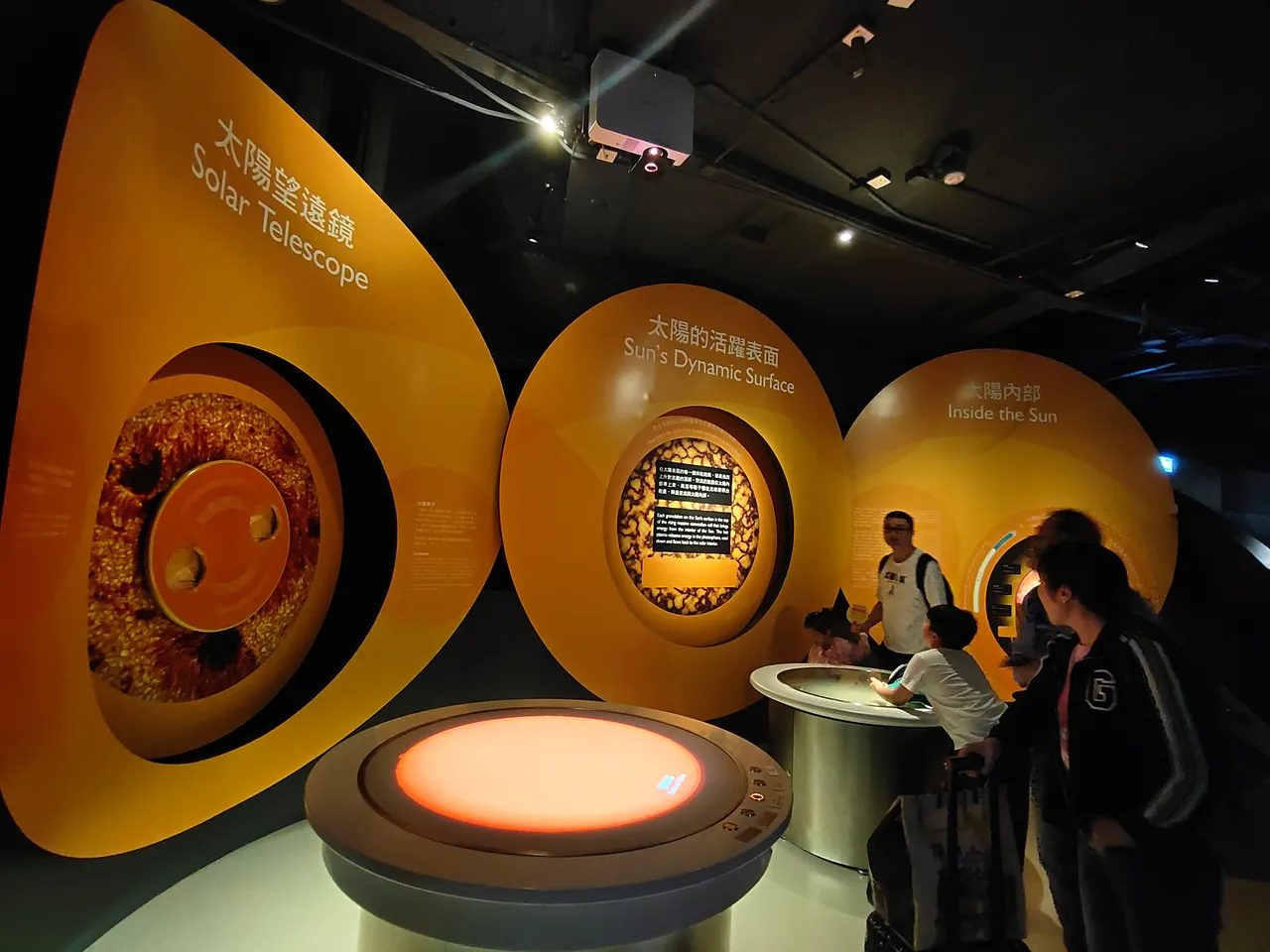
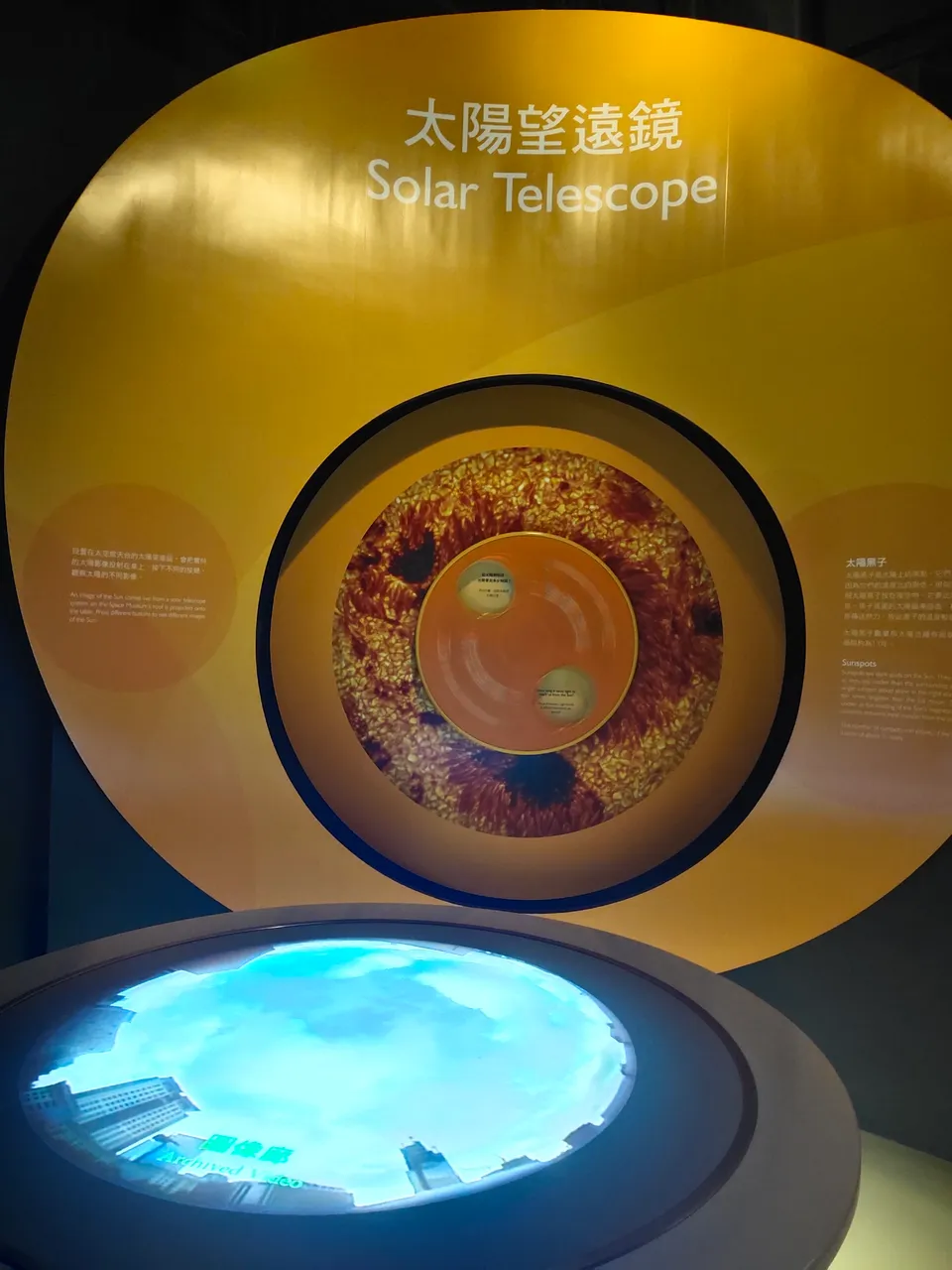 | 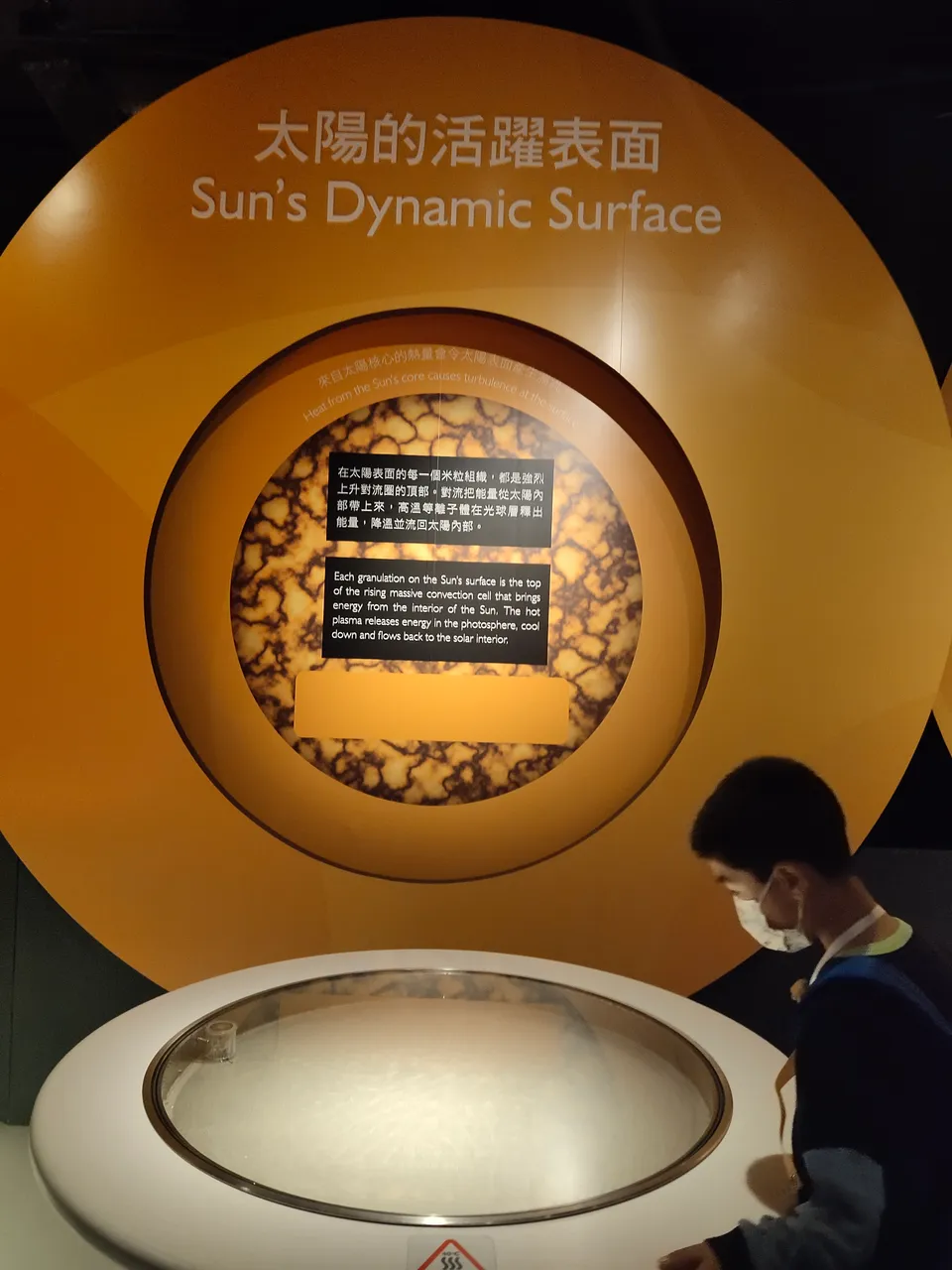 |
|---|
Do you still remember what are parts of the sun? Recall your Science lesson, lol. If not, then you'll remember them from this exhibition.
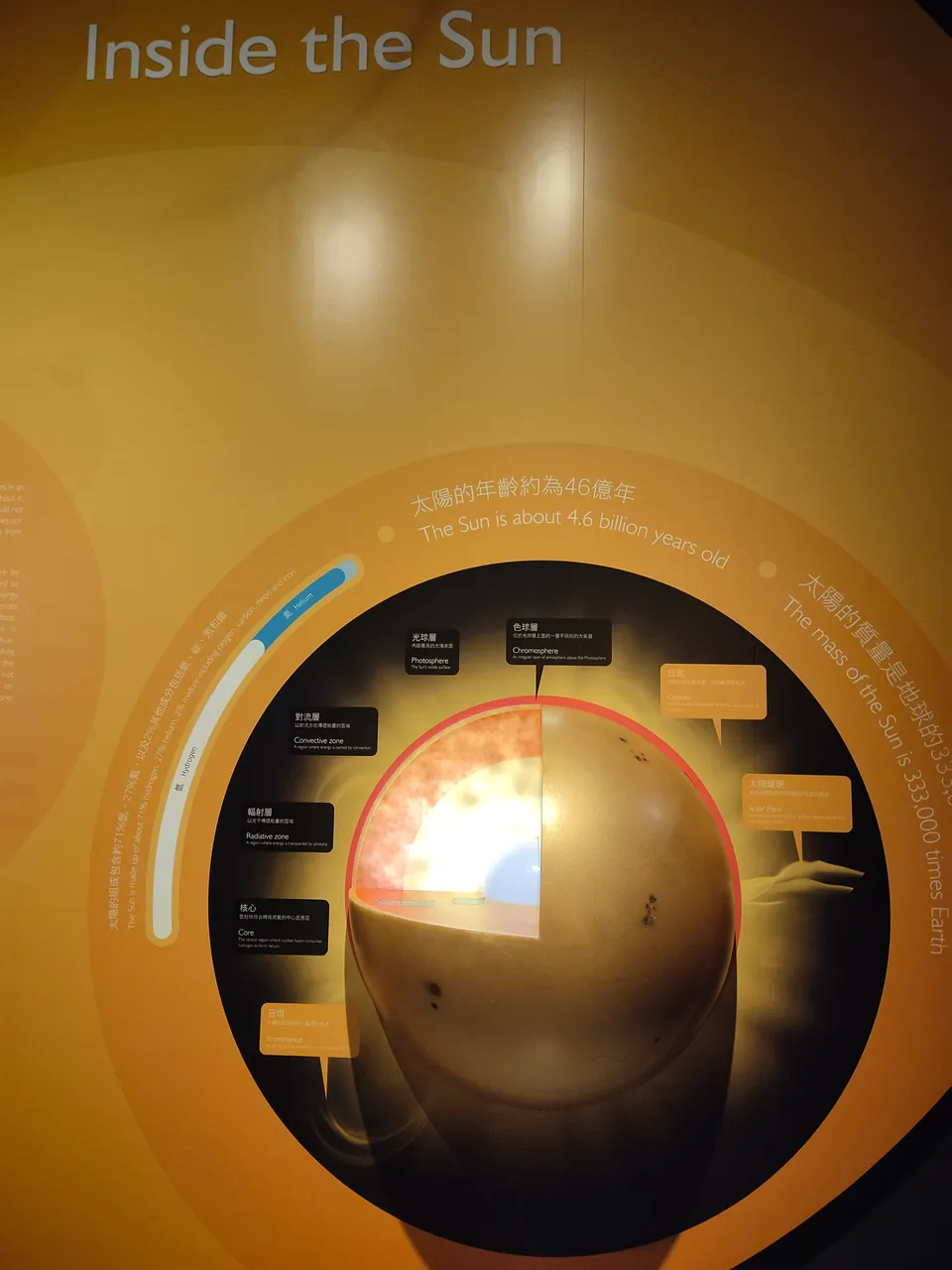
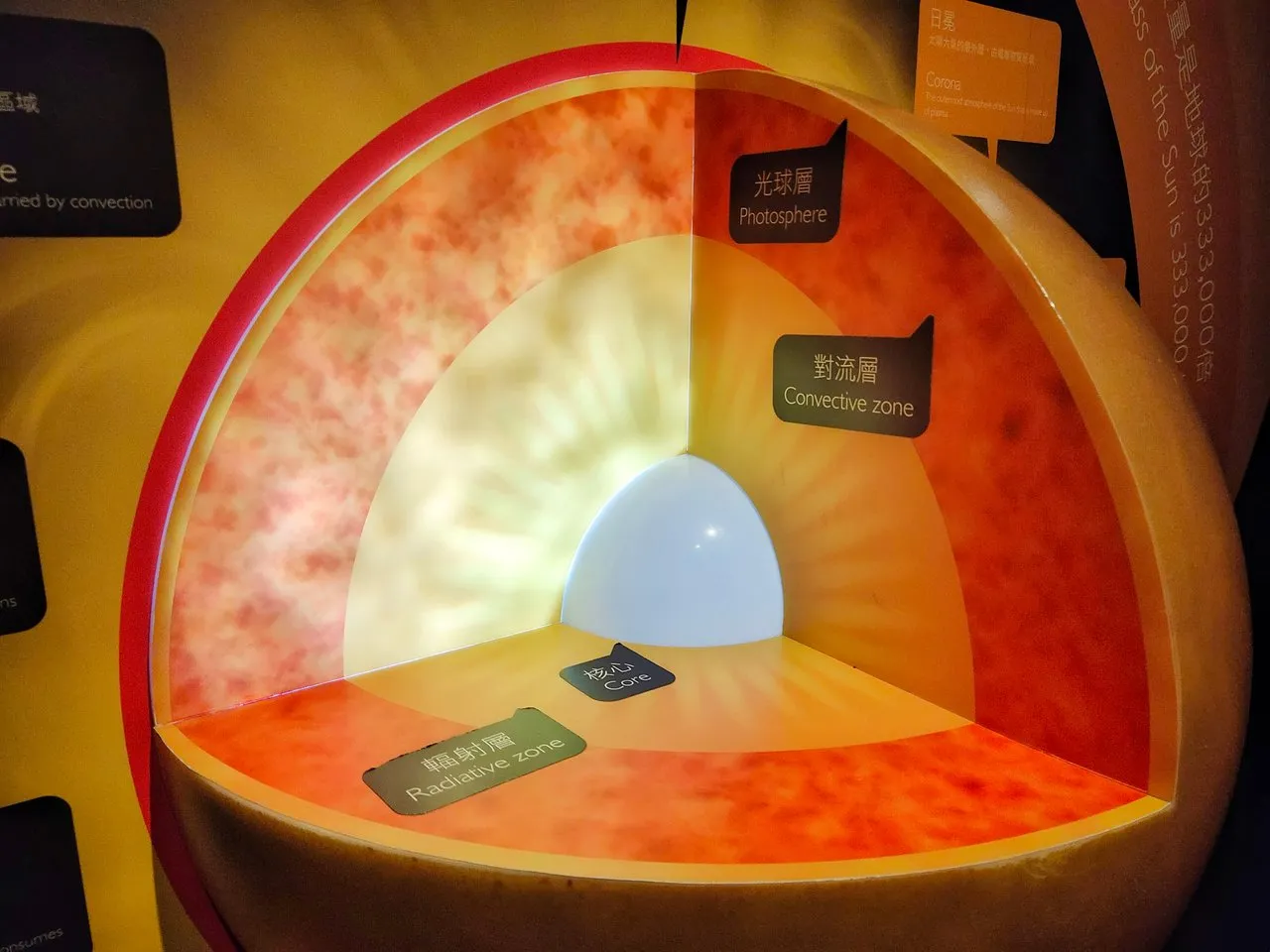
The Asteroid Hunting and Touch A Meteorite were one of my favorite parts. However, I was a bit confused at the beginning in the hunting asteroids as I couldn't spot one, not until the second attempt.

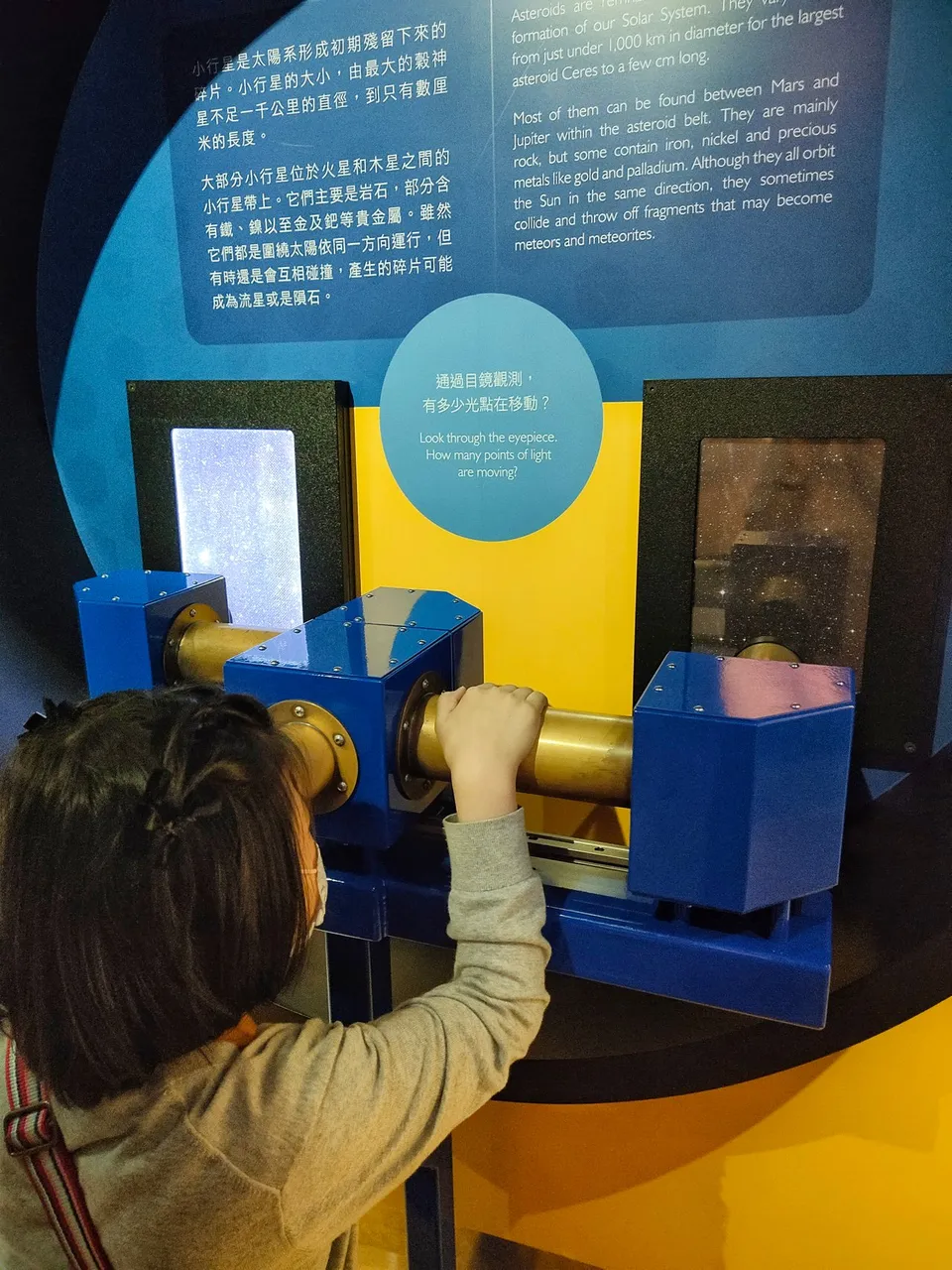
Only kids with their parents were lining up to see the slice of meteorite from the telescope. Of course, I wanted to see it too so I lined up and become the only adult in the line, lol.
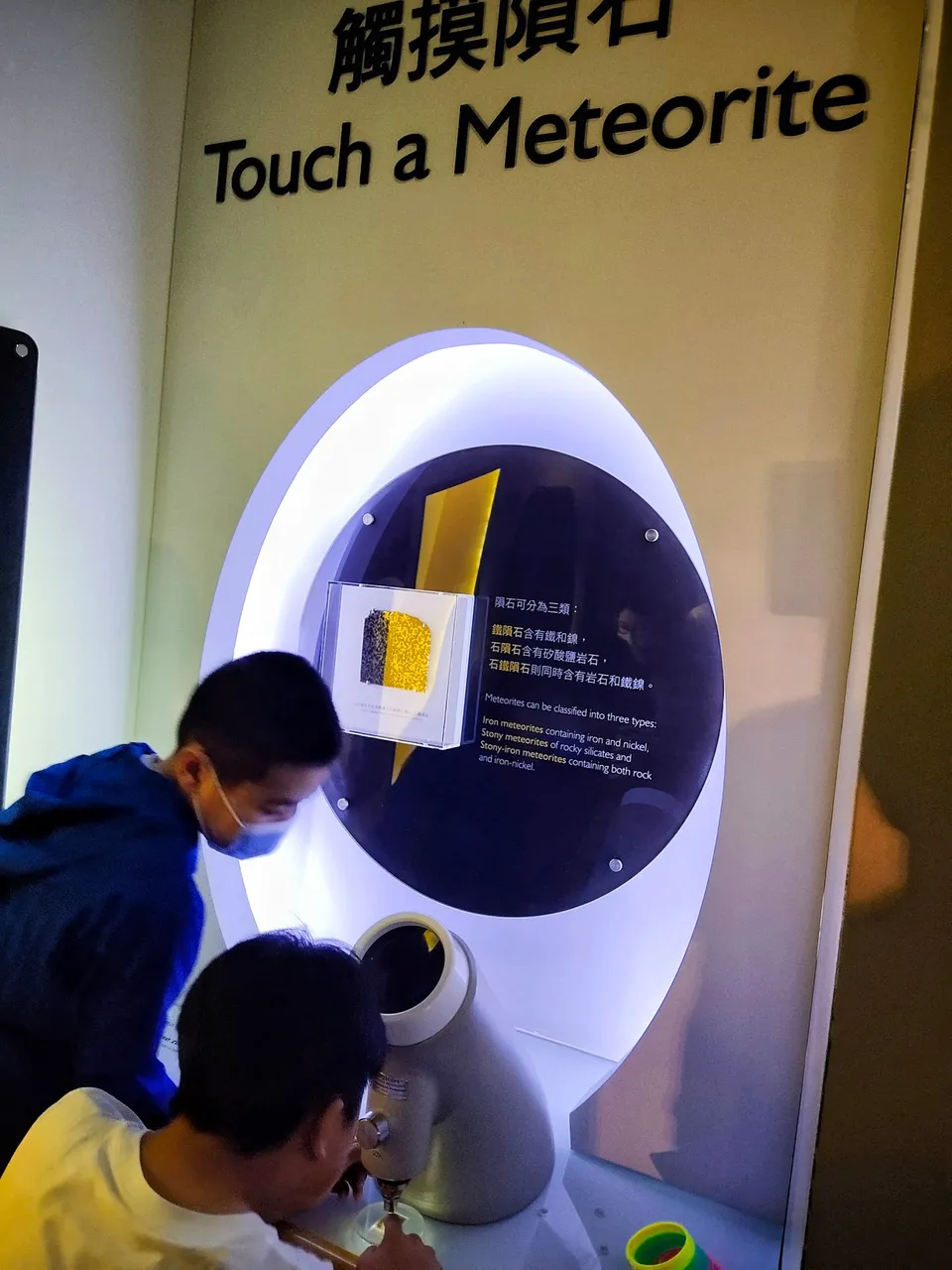
Here's a slice of a meteorite. Isn't it beautiful sparkling in the dark? I never expect to see it colorful and sparkling like a diamond.
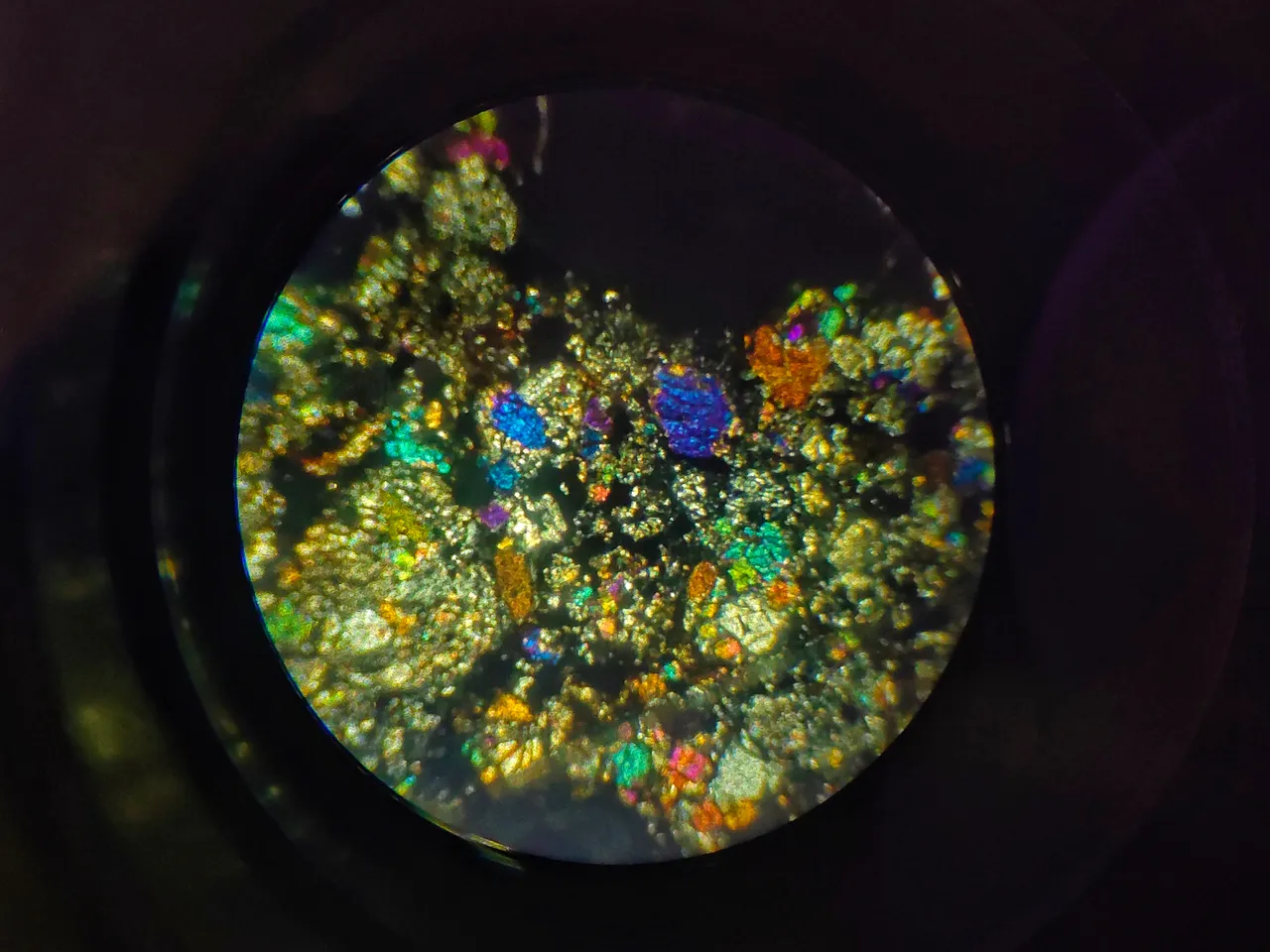
Do you know the classification of meteorites? They are iron, stony, and iron-stony meteorites. This is a slice of a stony-iron meteorite called Brahin Pallasite.
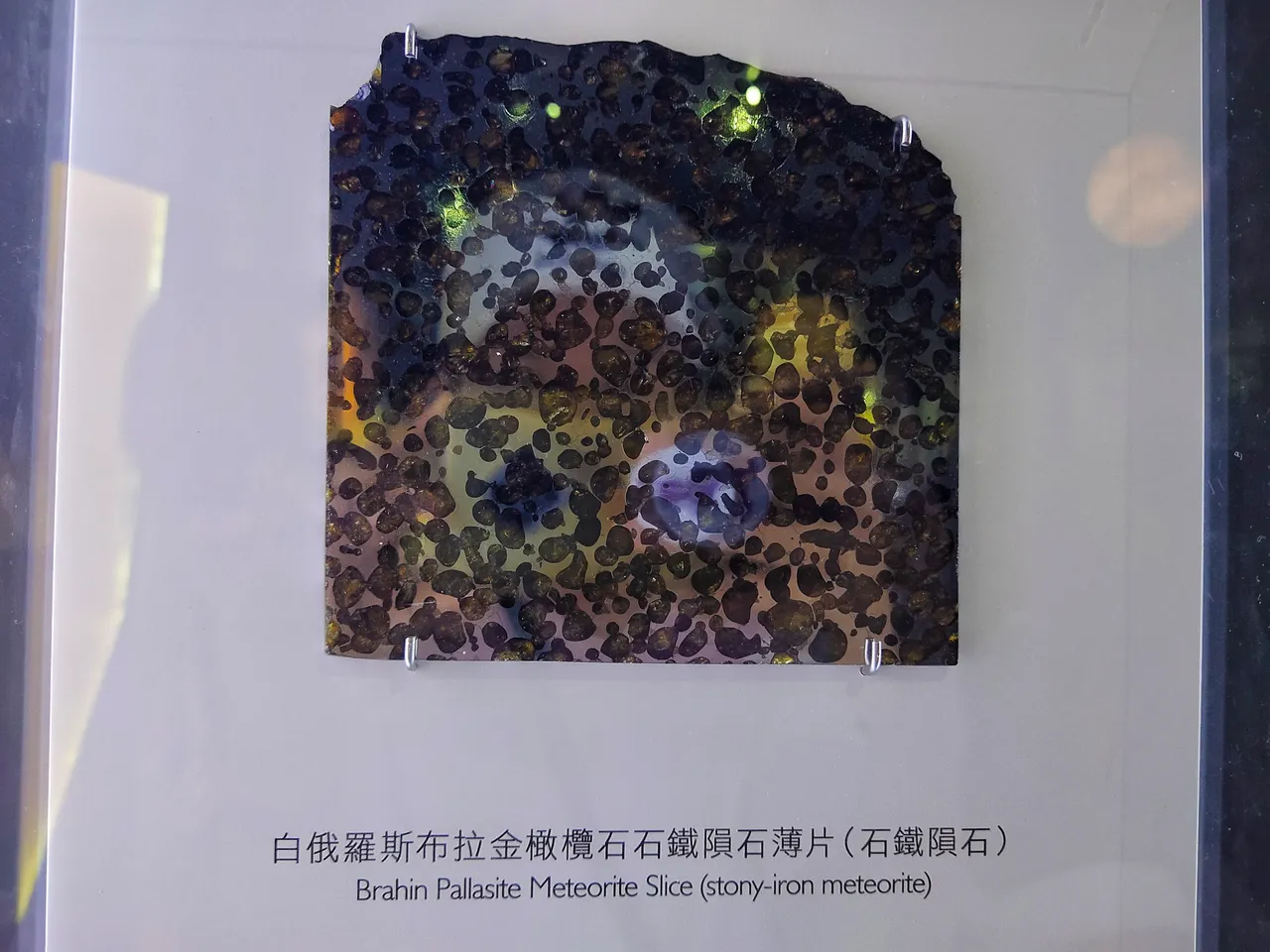
Meanwhile, why the sky is blue is explained in this exhibition. It says that:
Gases and particles in the atmosphere scatter the blue component of the sunlight all over the sky.
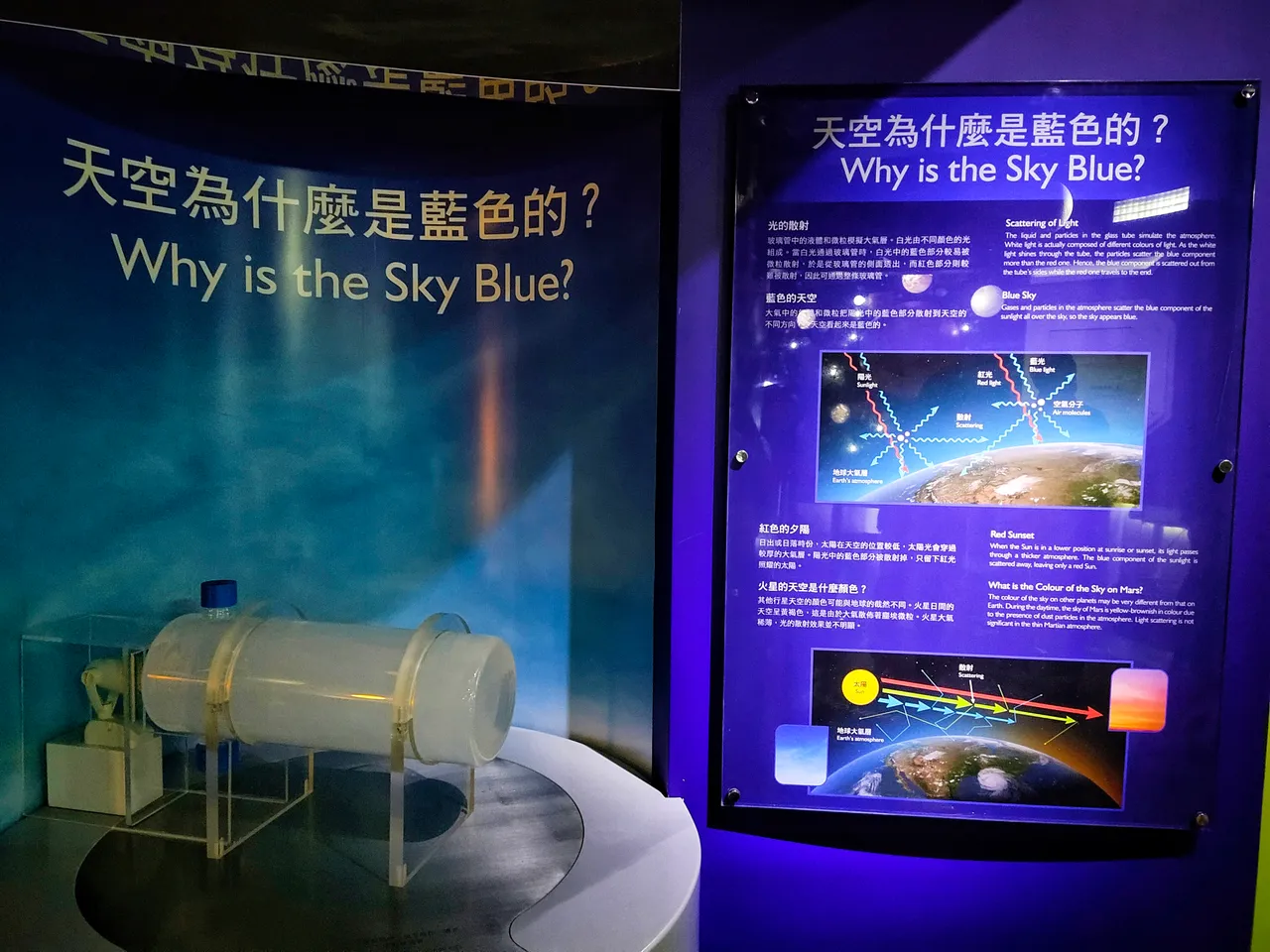
I entered the Moon Phases hall and was stunned by the exhibitions inside. The first thing that caught my attention was the Moon/Mars VR. Visitors can have a chance to travel to the moon and Mars with this VR installation. I was supposed to line up when they close the line and I was told to come at a certain hour, which I didn't do as I was impatient to wait for the time.
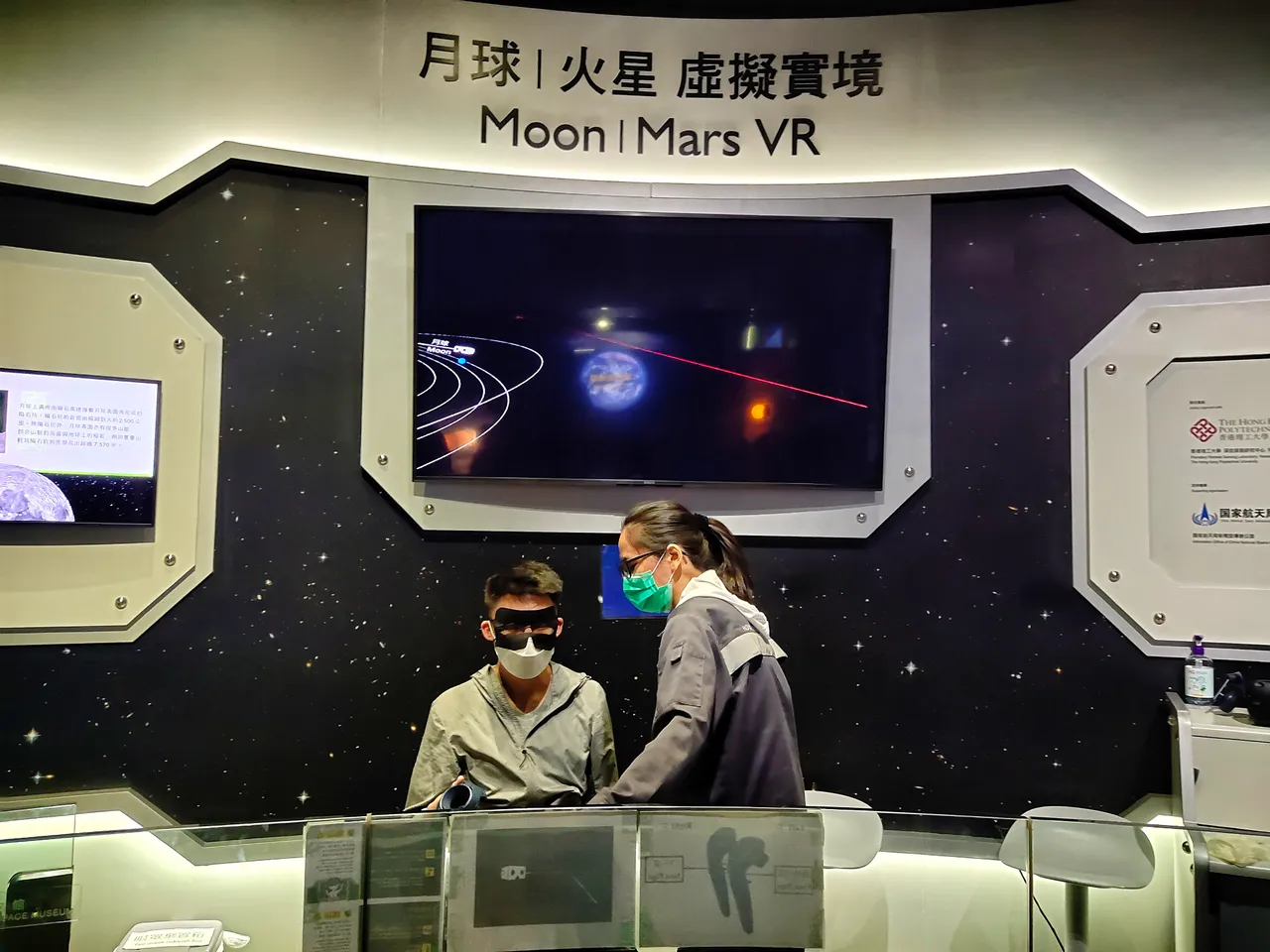
The place was so cool with its neon green light effects and room color. A digital installation was on the left showing animations forming different zodiac signs.
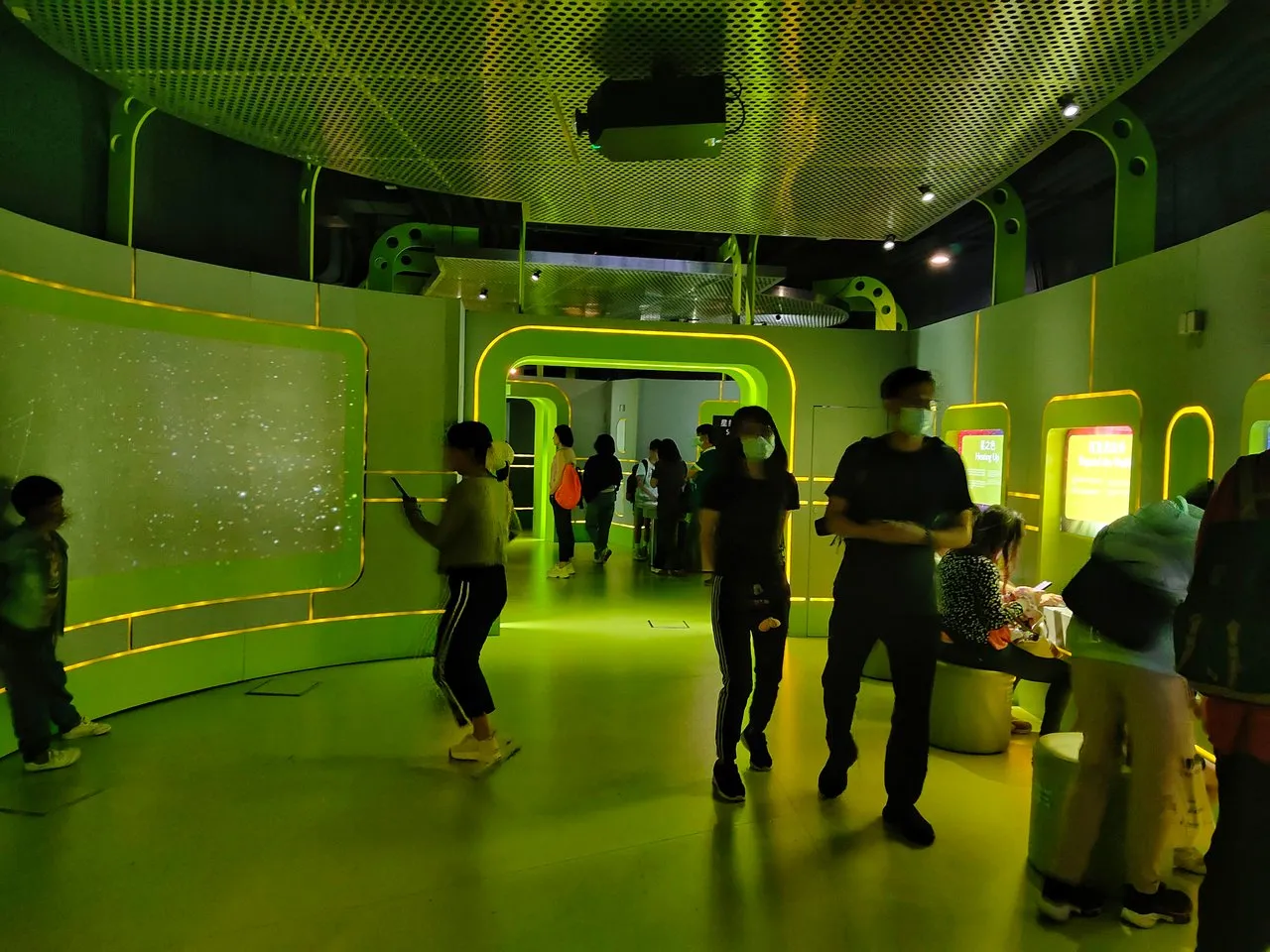
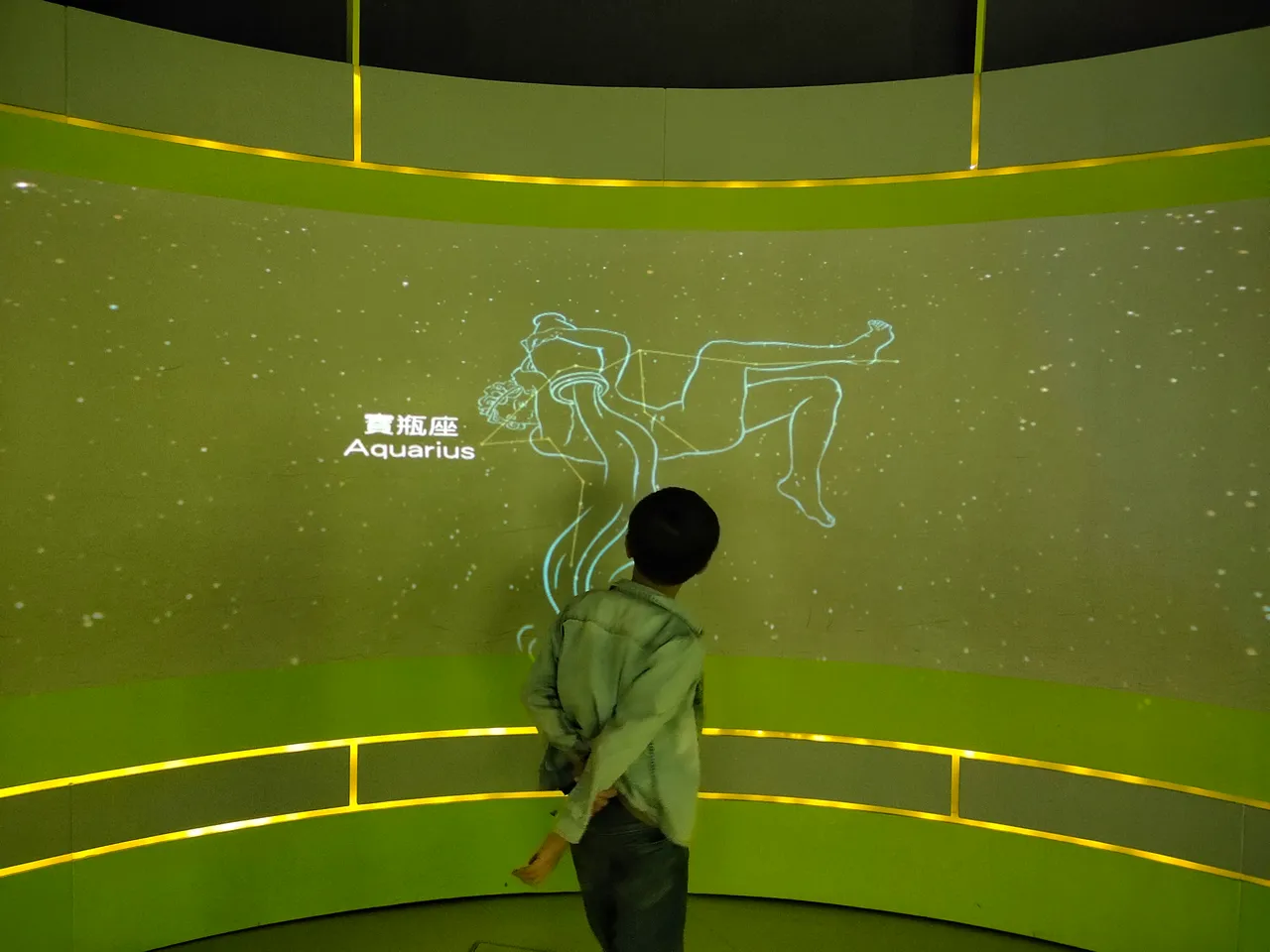
This hub offers a place for resting, especially for the elderly. There are Science-related video installations on screens for visitors to have something to watch while resting.

There are a lot more interesting exhibitions about Space Science and other else.
The Change of Season is briefly explained wherein the tilt of the Earth's axis is the main cause. Just check the second photo to know more about it and why is it hot in summer and cold in winter.
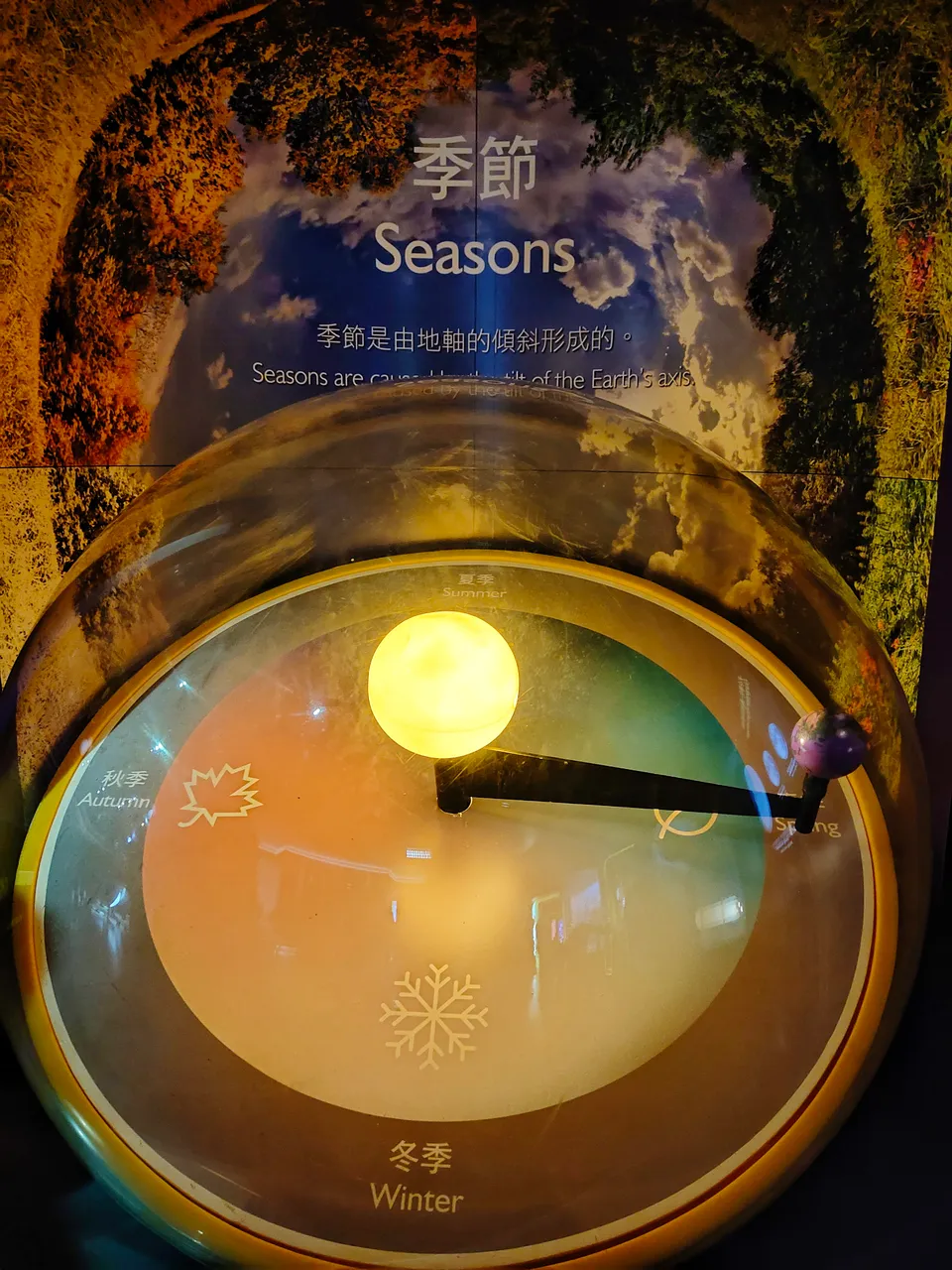

Other exhibitions include the Wrong Way Water, Impact Craters, Starlight, Heating Up, Spiral Galaxy Arms, and others.
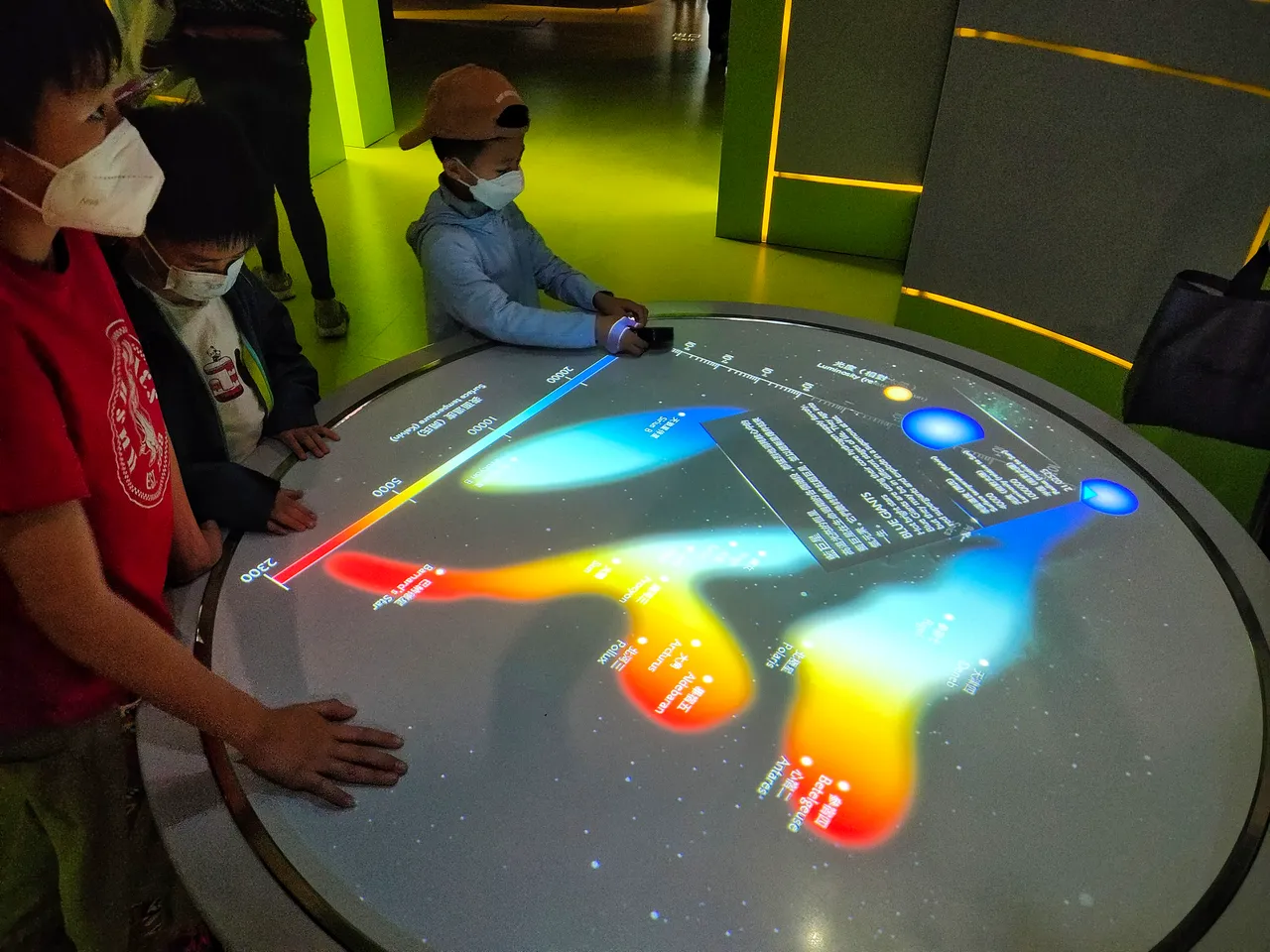
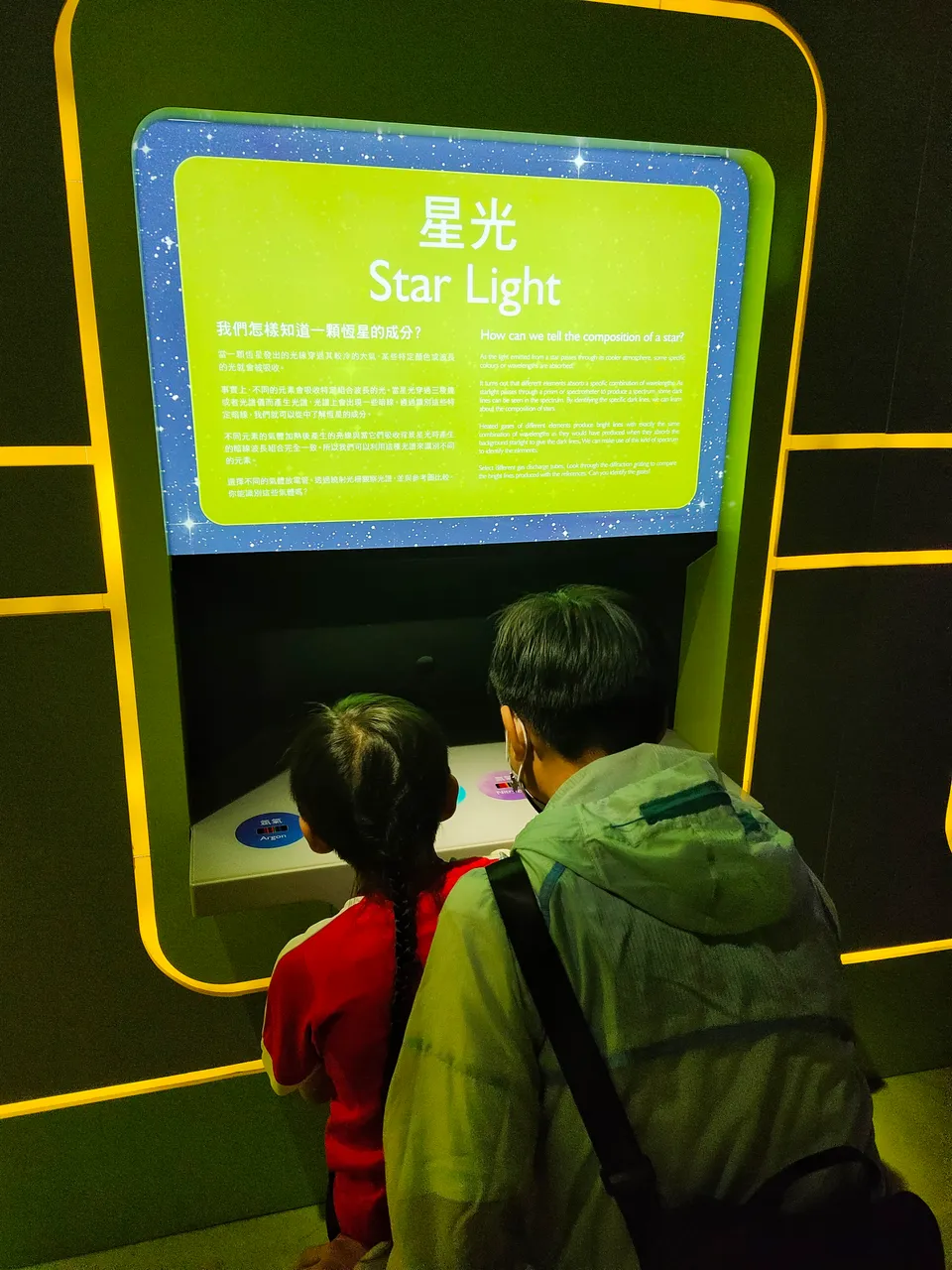 | 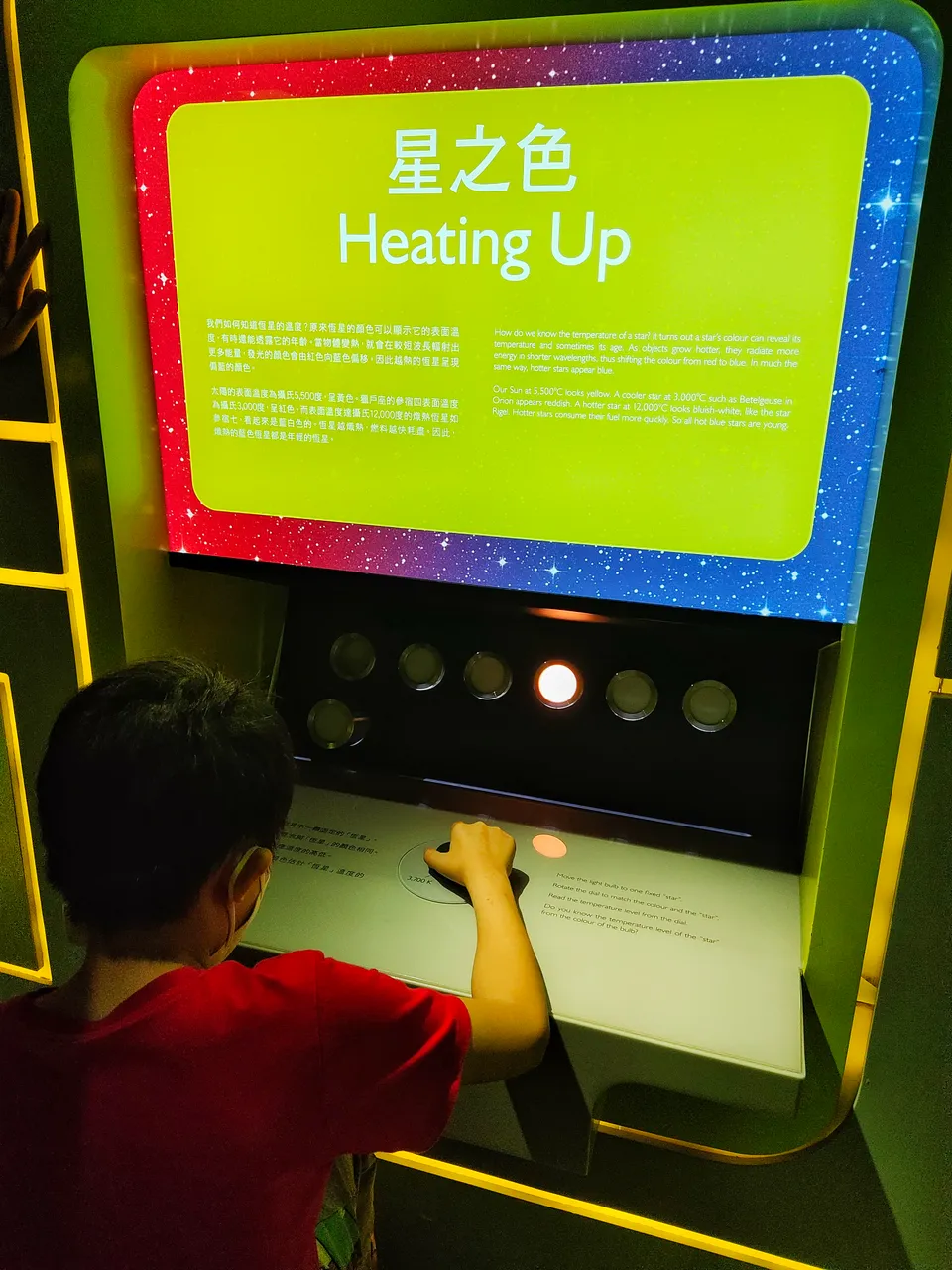 |
|---|---|
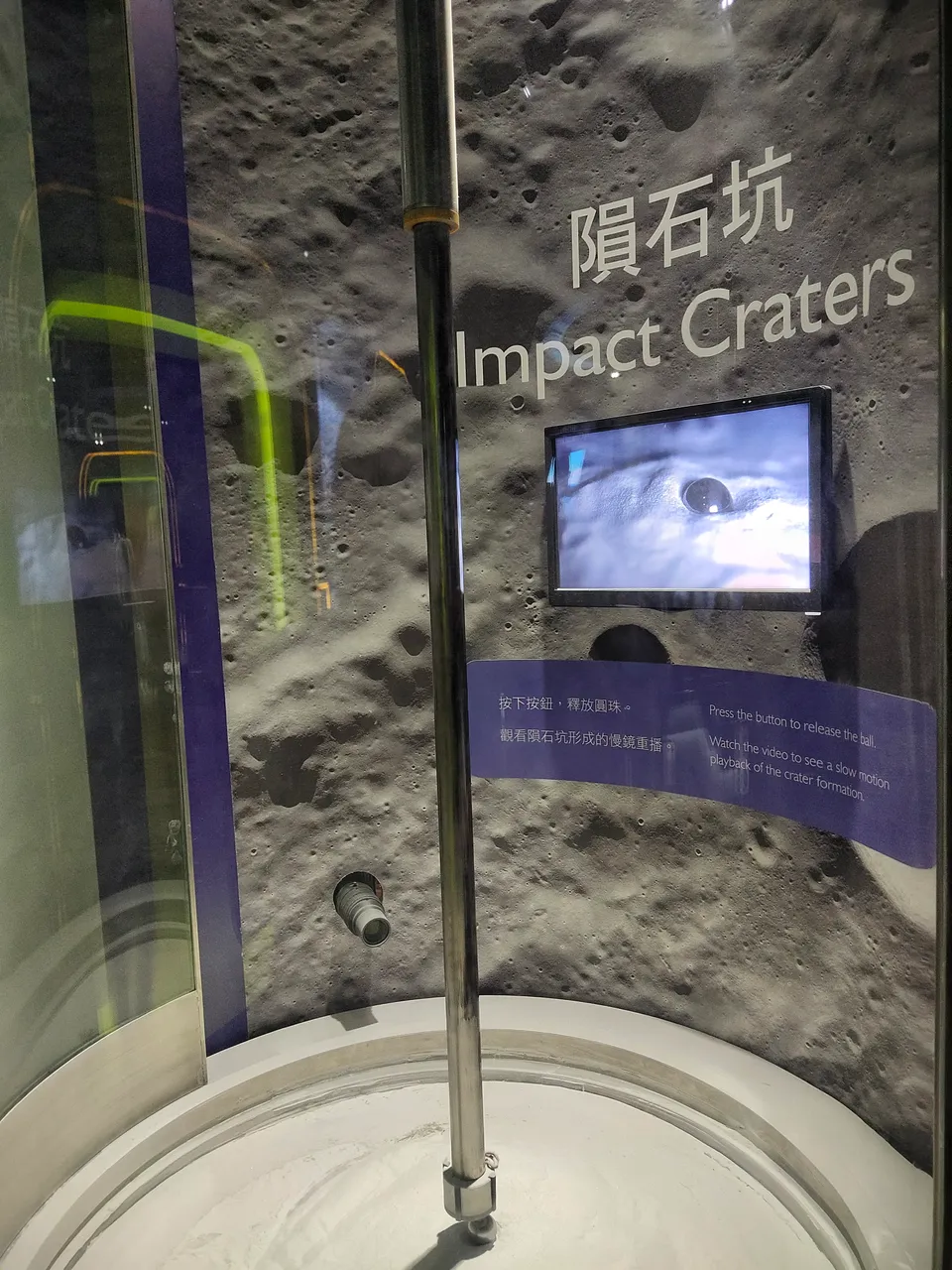 |  |
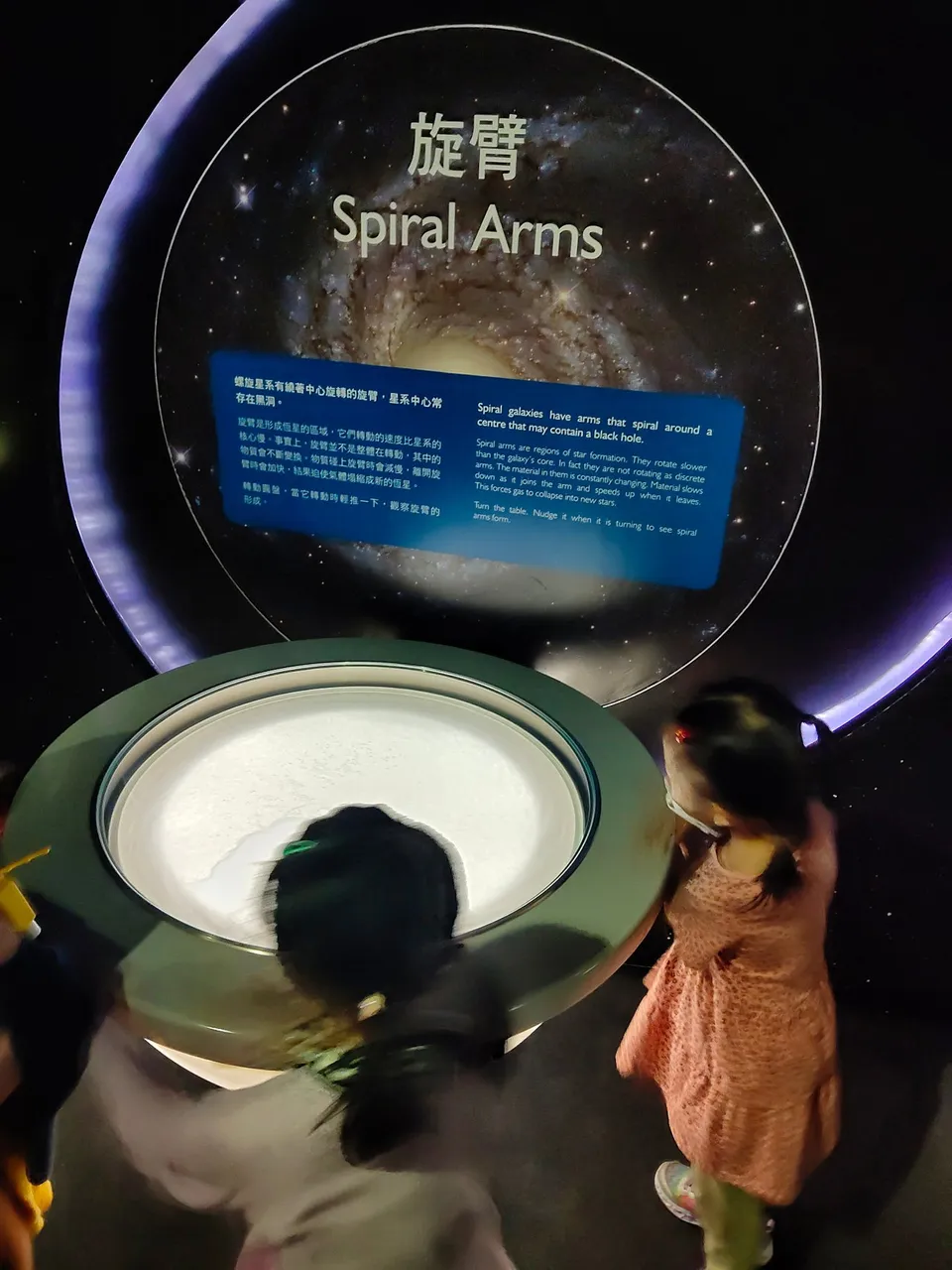
The Beyond the Visible exhibition allow visitors to see more Visible Lights that our naked eyes can not use the sensor for different wavelength. It gives me an impression similar to an X-ray machine. I faced the camera and my visible light image was shown on the left. It was cool and can even detect high body temperature.


Meanwhile, this exhibition explains how Aurora is formed, or the colorful light that forms like a waving curtain that typically appears in Southern and Northern Polar night skies.
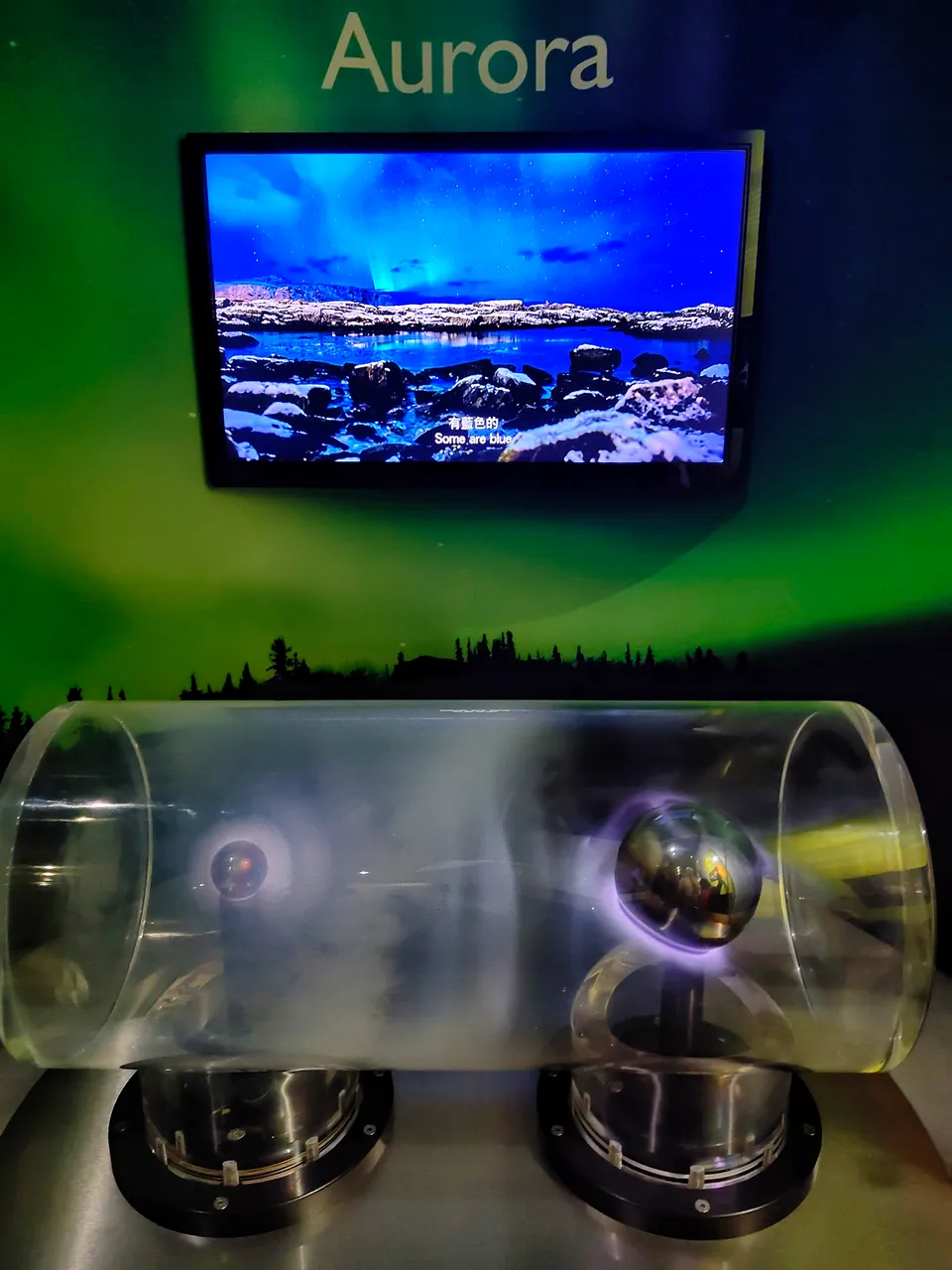
I proceeded and entered the Galaxy Galore which made me feel like I was outside of the Universe seeing the galaxy-like sparkling dust particles forming a spiral.
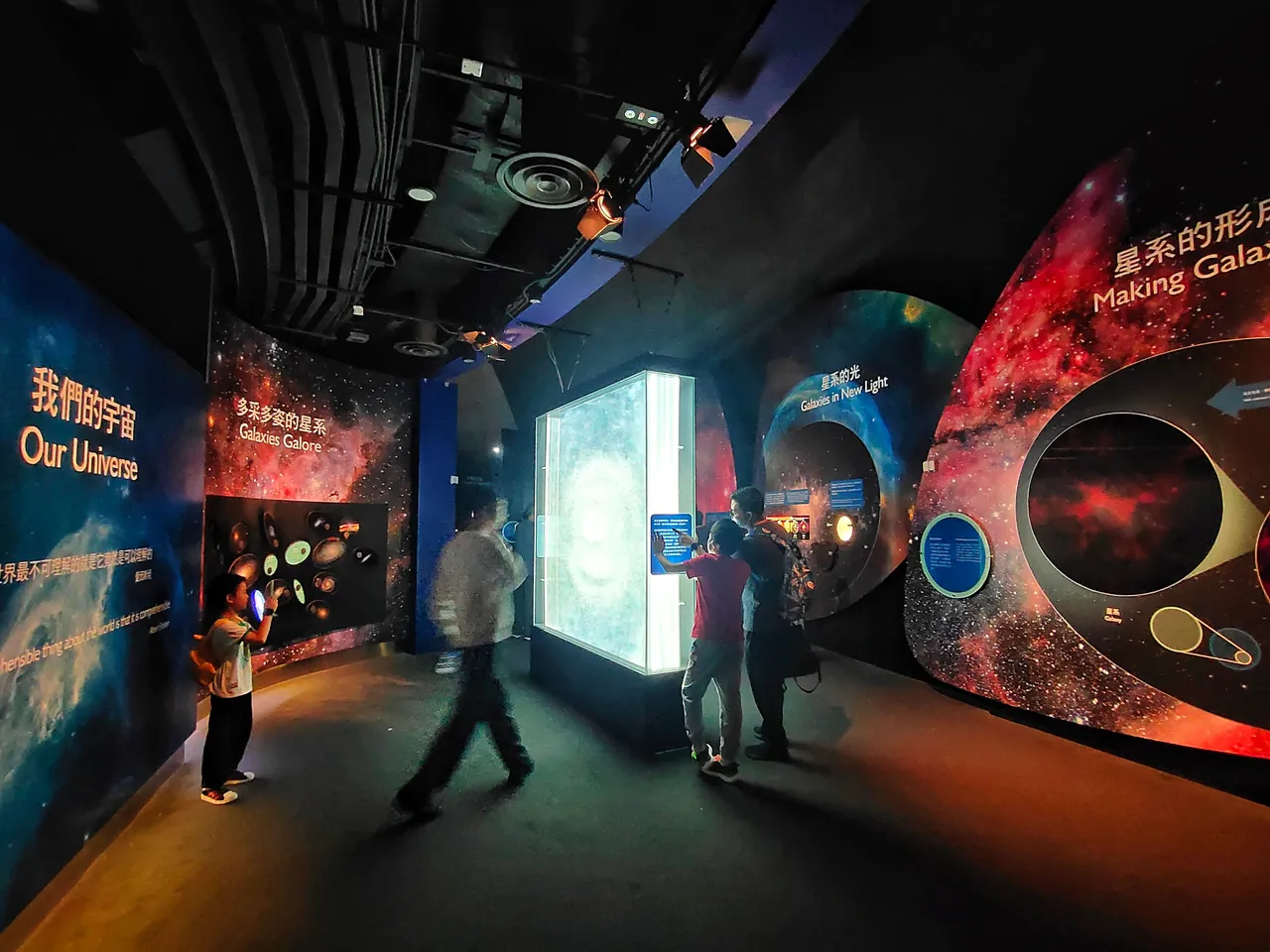

This museum has a lot of interactive areas with Space Science-related installations transformed into games to allow visitors to feel what is being illustrated in the exhibition, such as Fundamental Forces, Gravity Surfing, Relativity Bicycle, and others. As much as I wanted to try those games, all areas were crowded with kids.
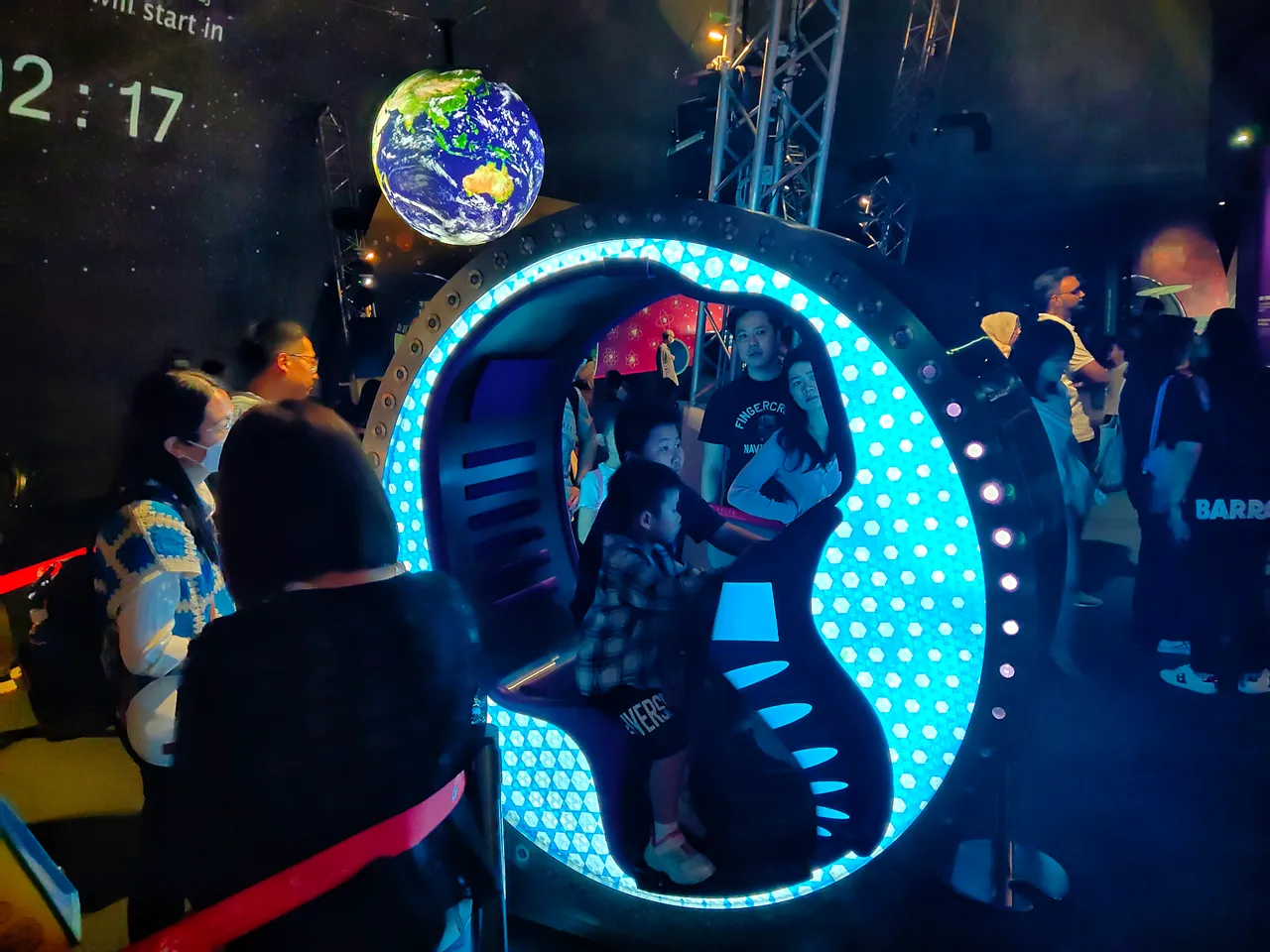
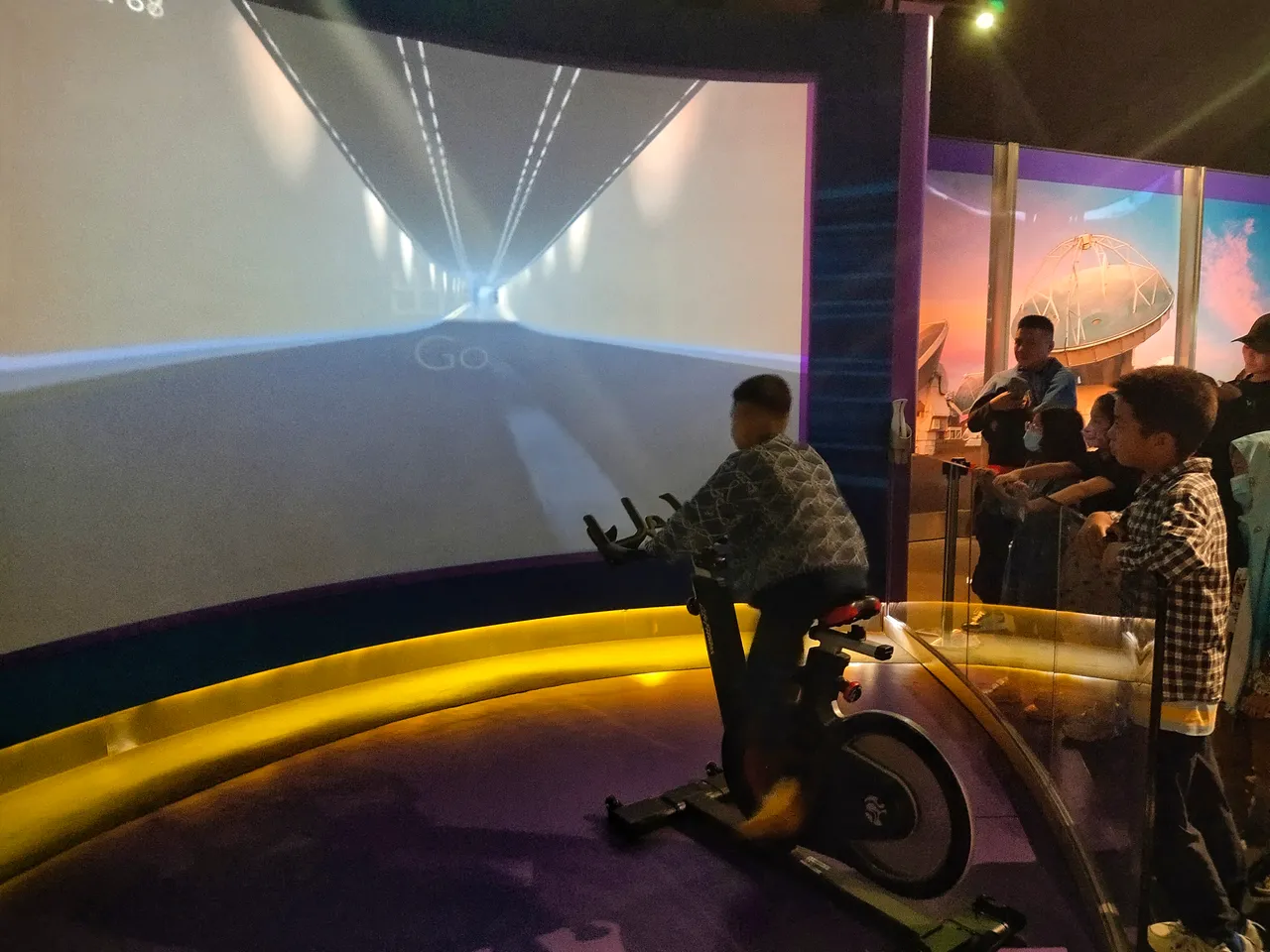
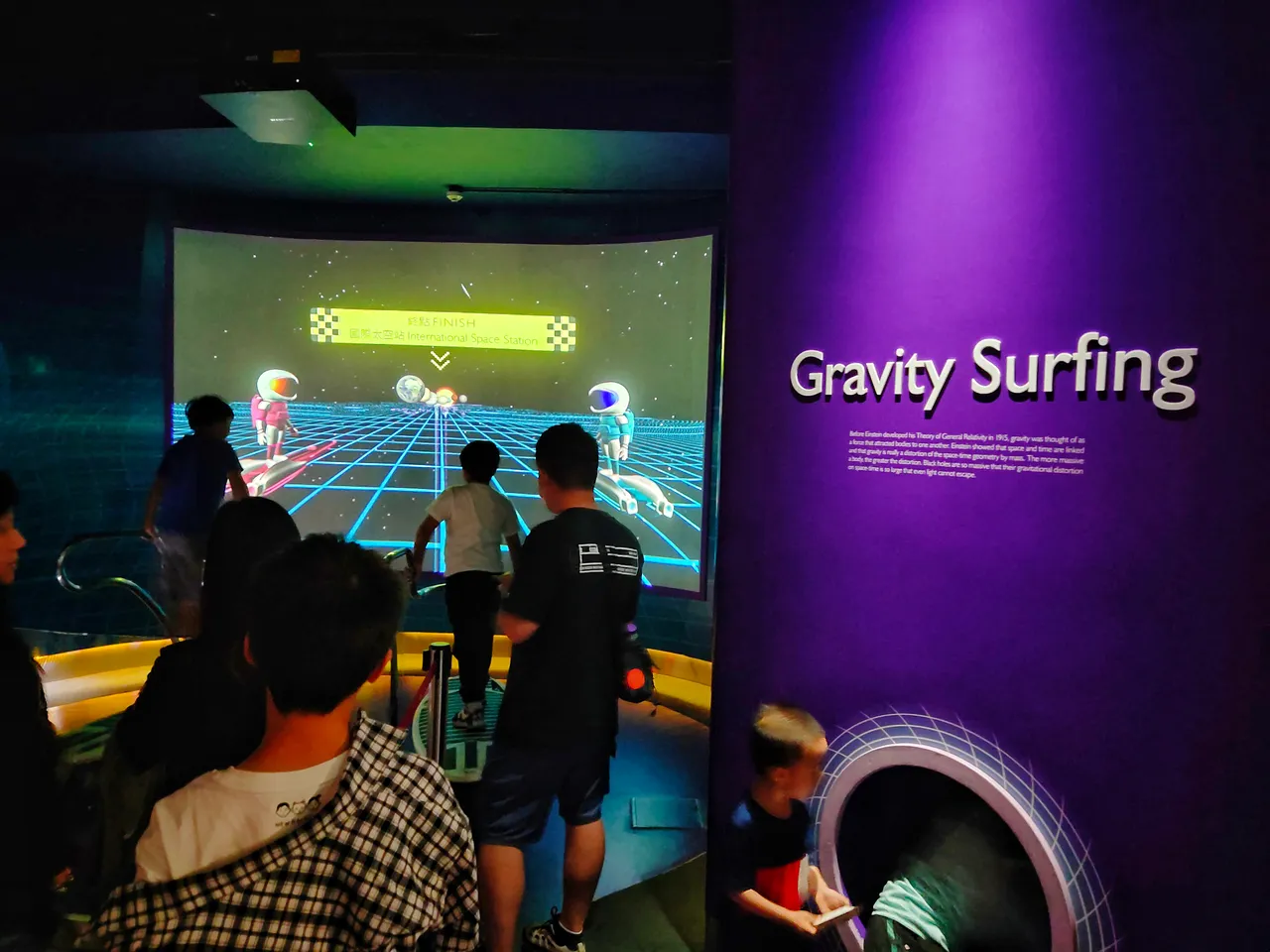
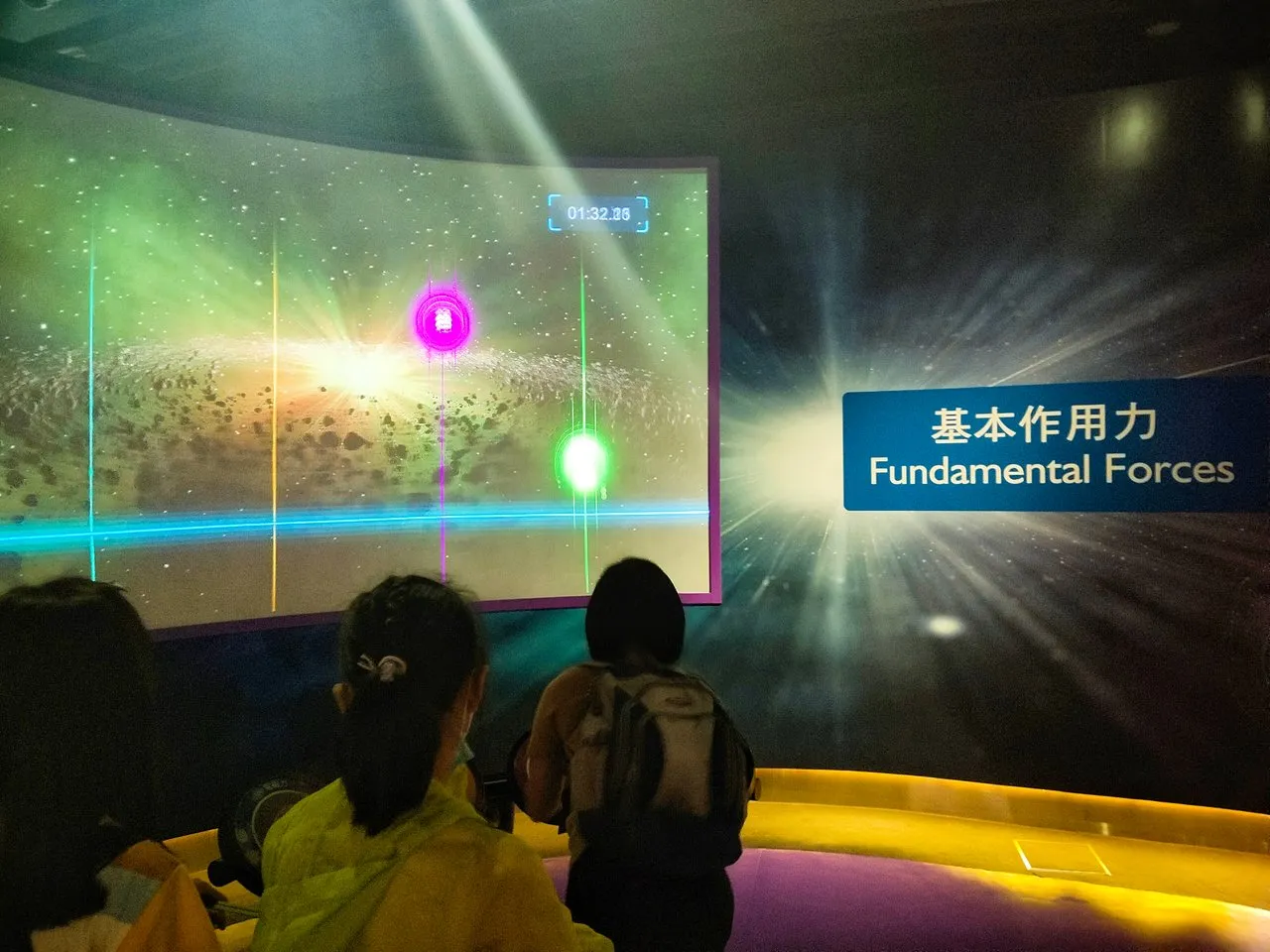
This room has a small Space Theater but different from the bigger theater on the upper floor. Short Science-related presentations are being played in scheduled hours. By the time I reached the theater, the next presentation has more than an hour countdown so I waited as I was curious about the presentation, even though I know about Big Bang Theory.
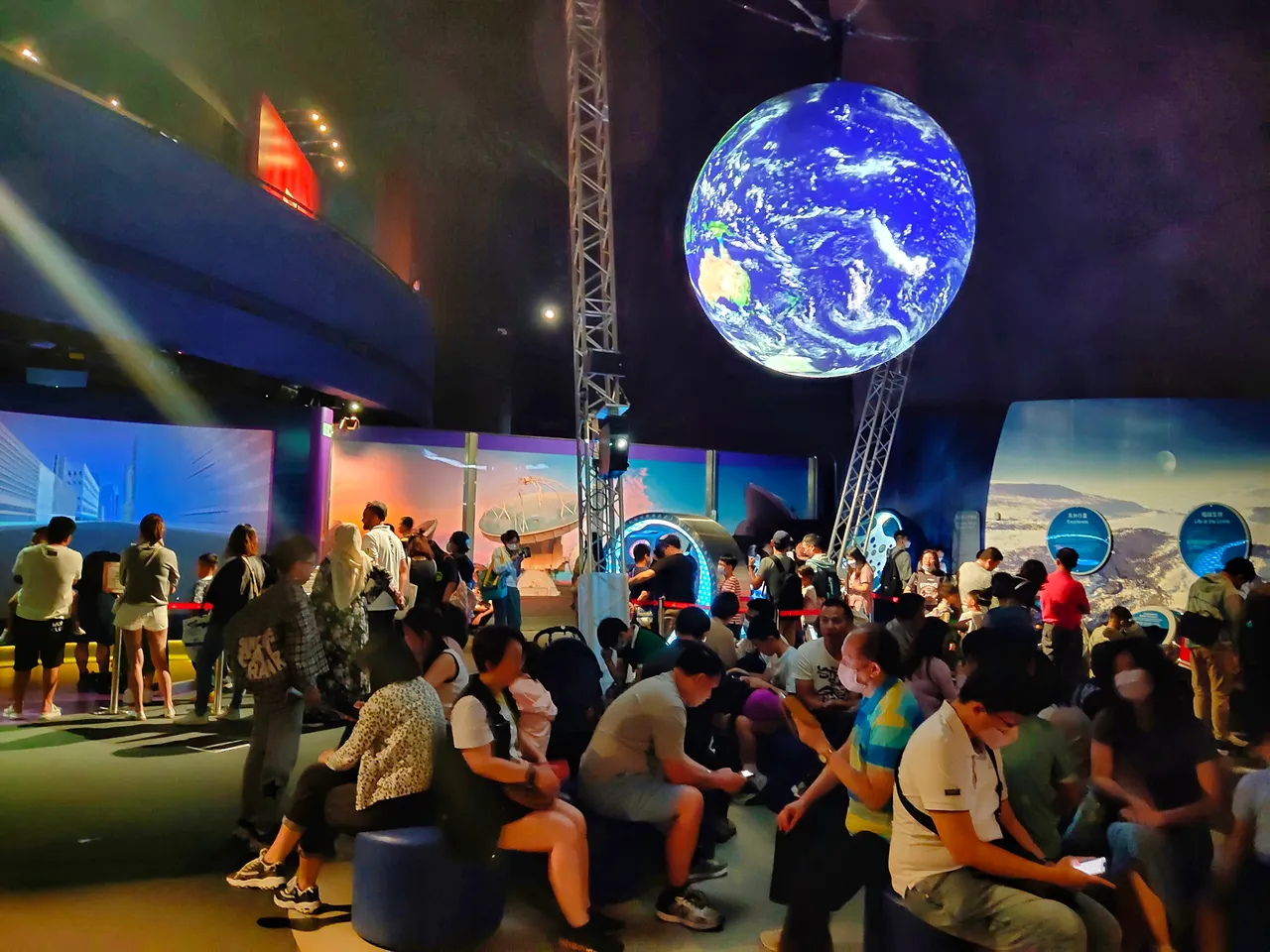
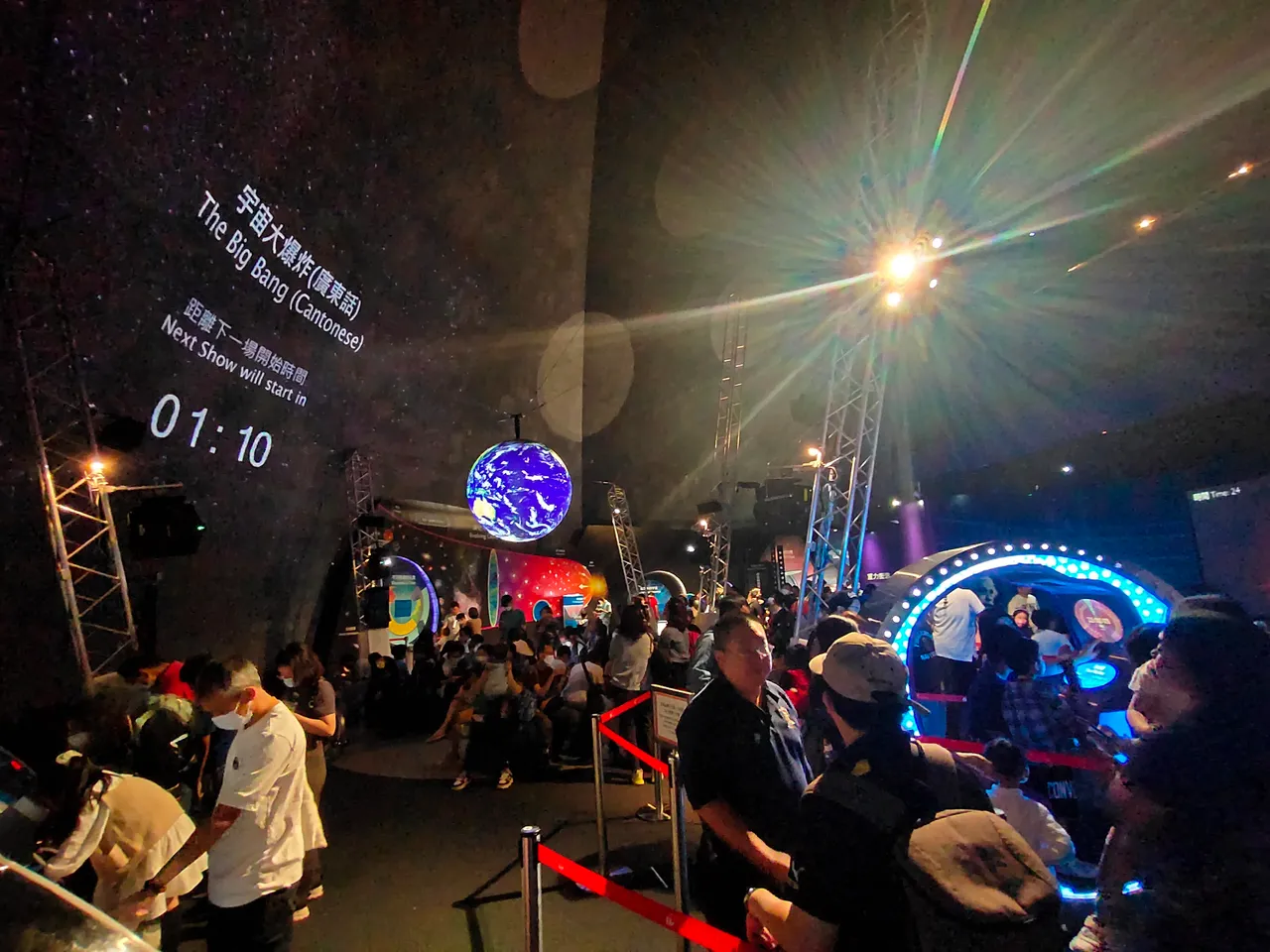
An Earth-shaped installation is suspended overhead in the middle of the screen which is also being used in the presentation. From showing the Earth phase, the object started to glow, and animated presentations are shown on the giant screen along with light effects showing Big Bang Theory.
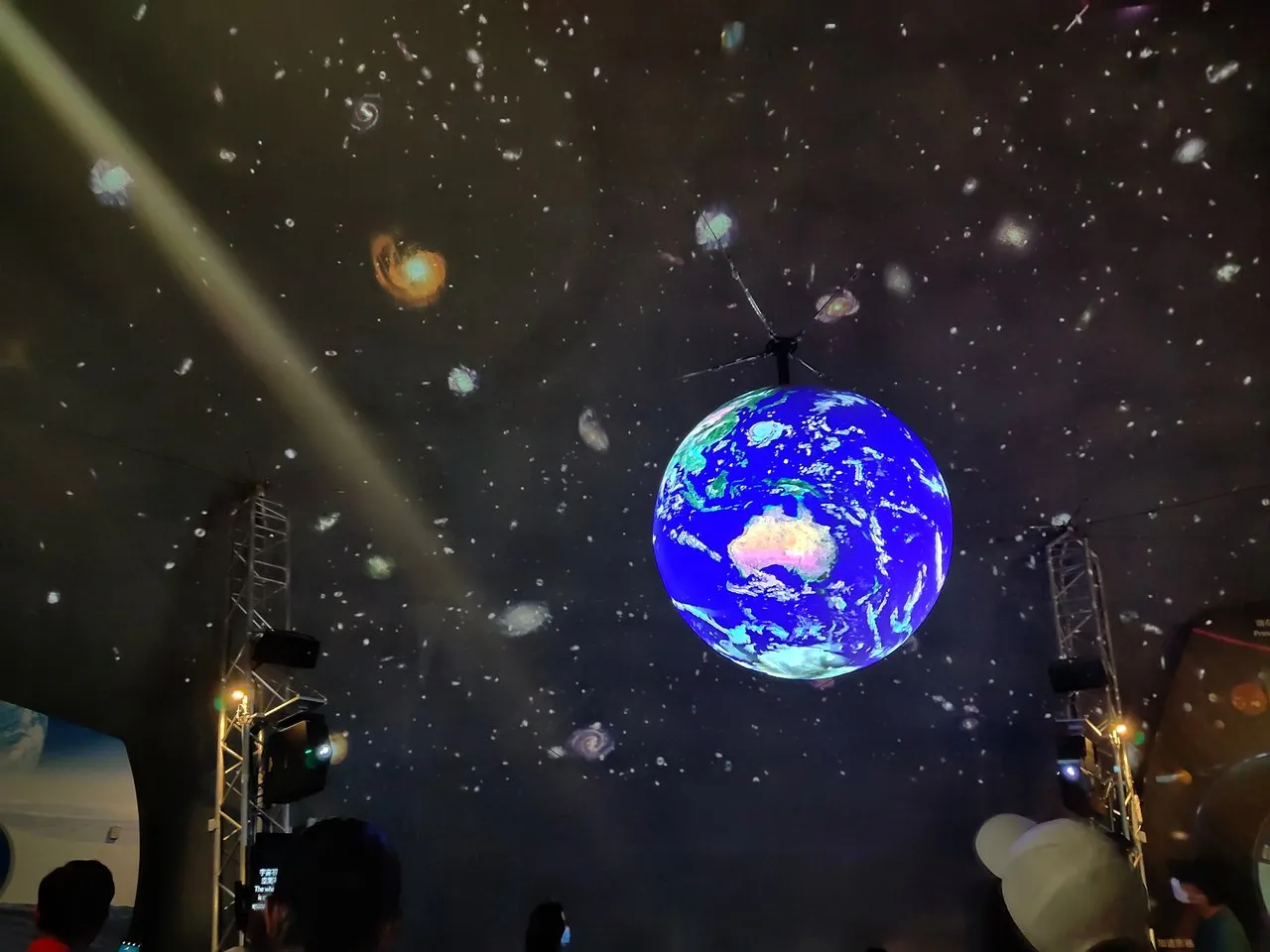
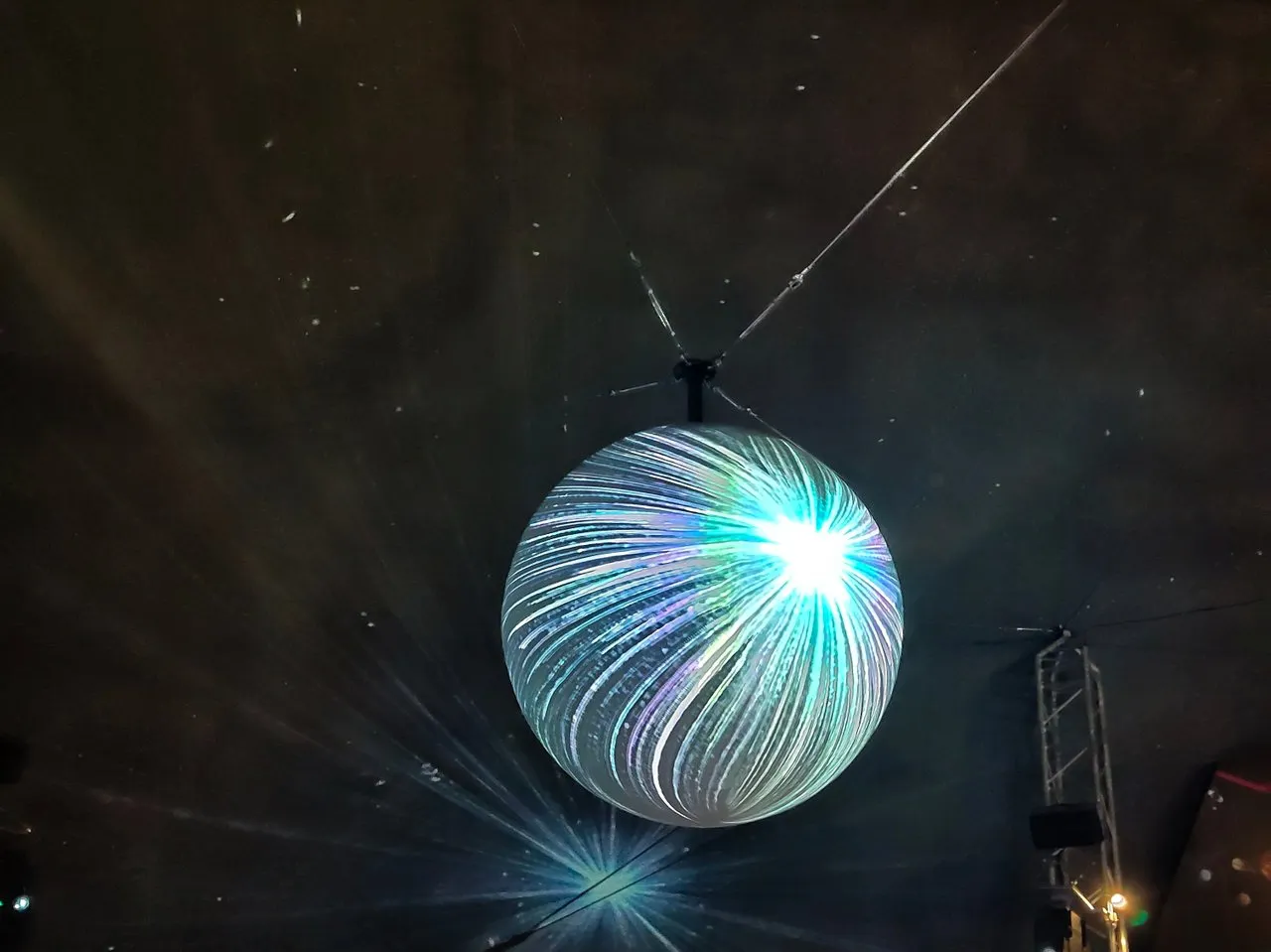 | 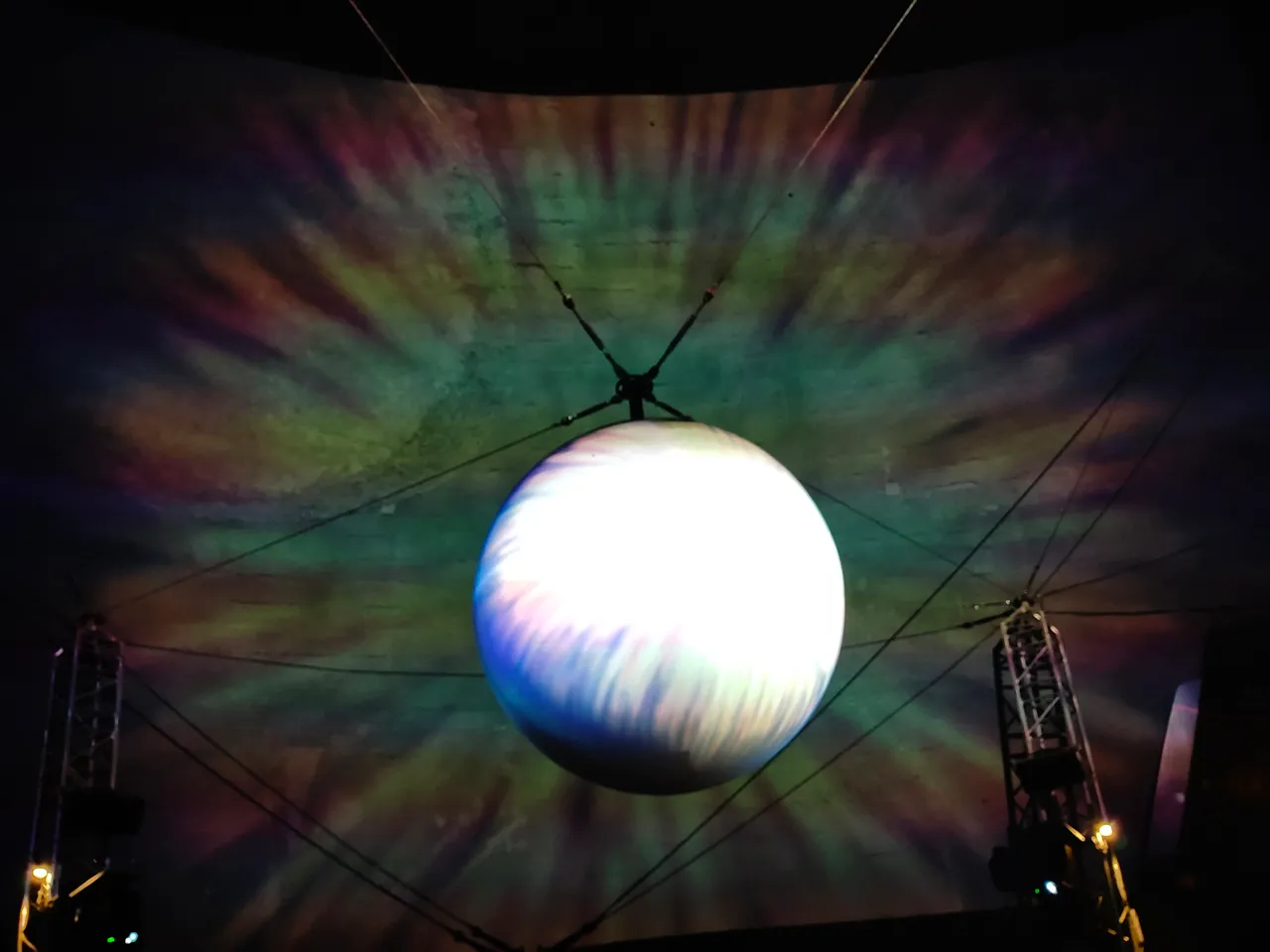 |
|---|---|
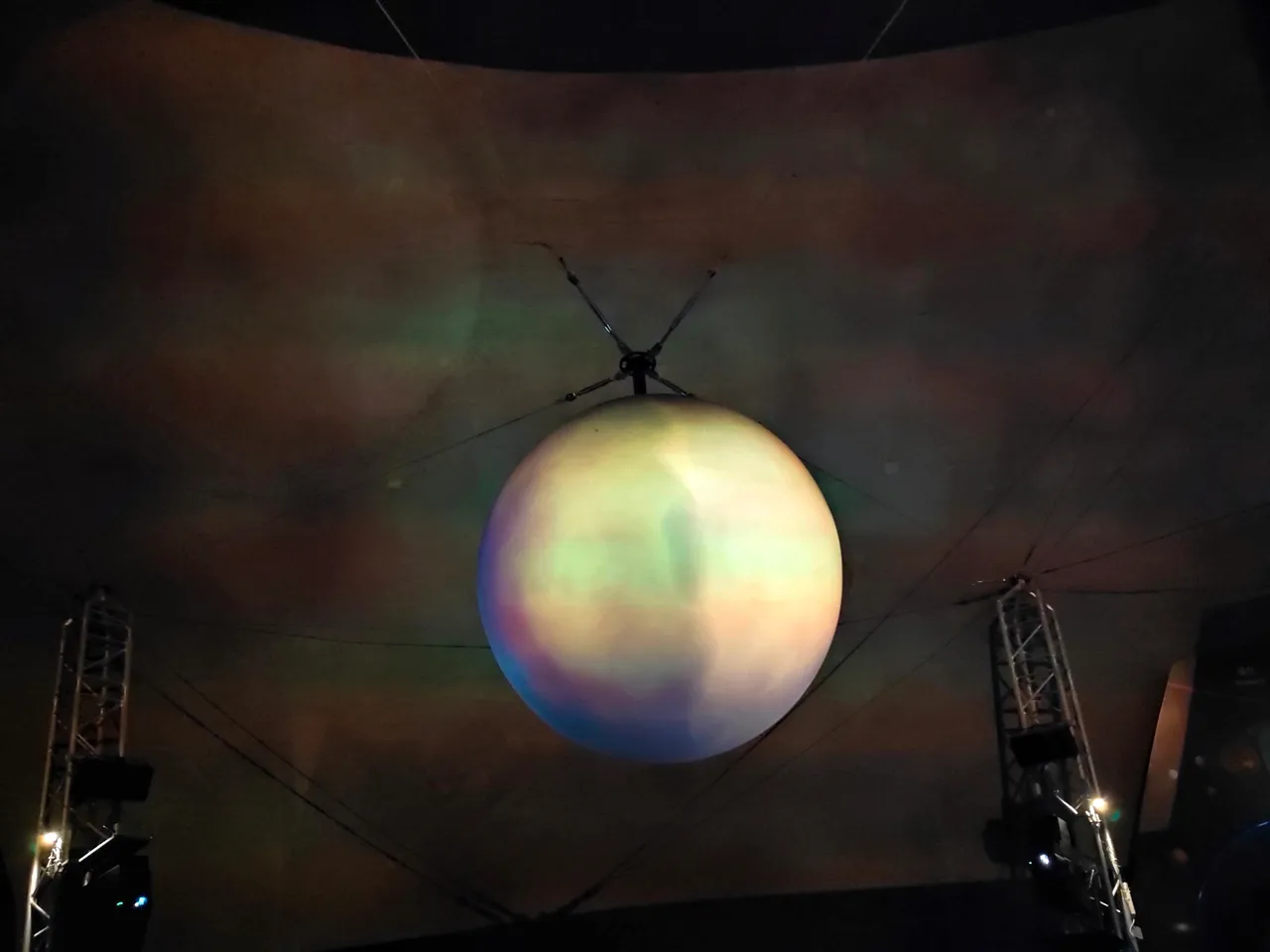 |  |
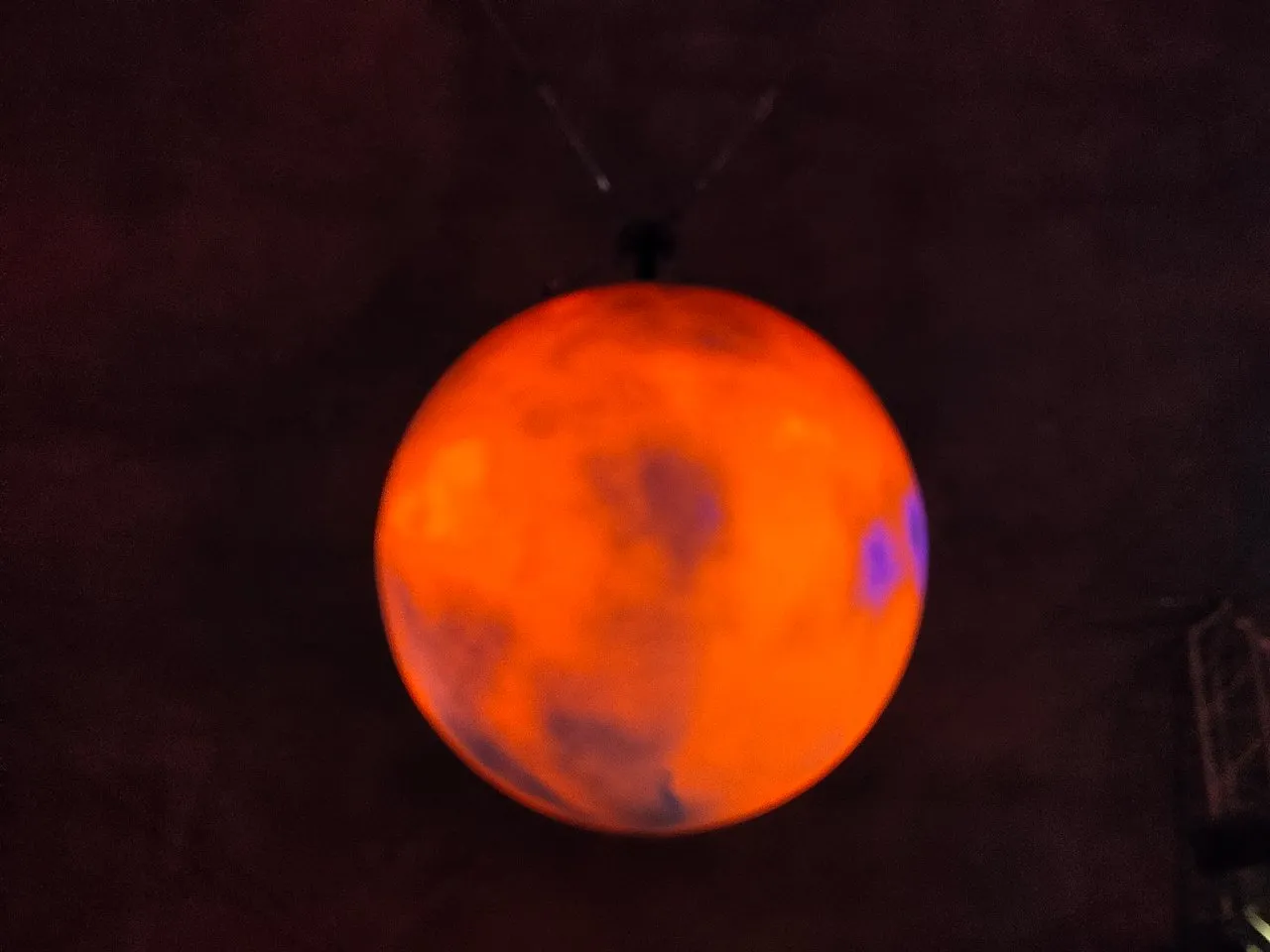 |  |
 |  |
A giant satellite is portrayed on the wall.

After watching the presentation, I went out of the hall and traversed through this dark corridor with walls that resembles a night sky with sparkling stars. In some parts, those sparkling particles are connected like Constellations, and formed images of some popular Scientists like Albert Einstein, Isaac Newton, and others.

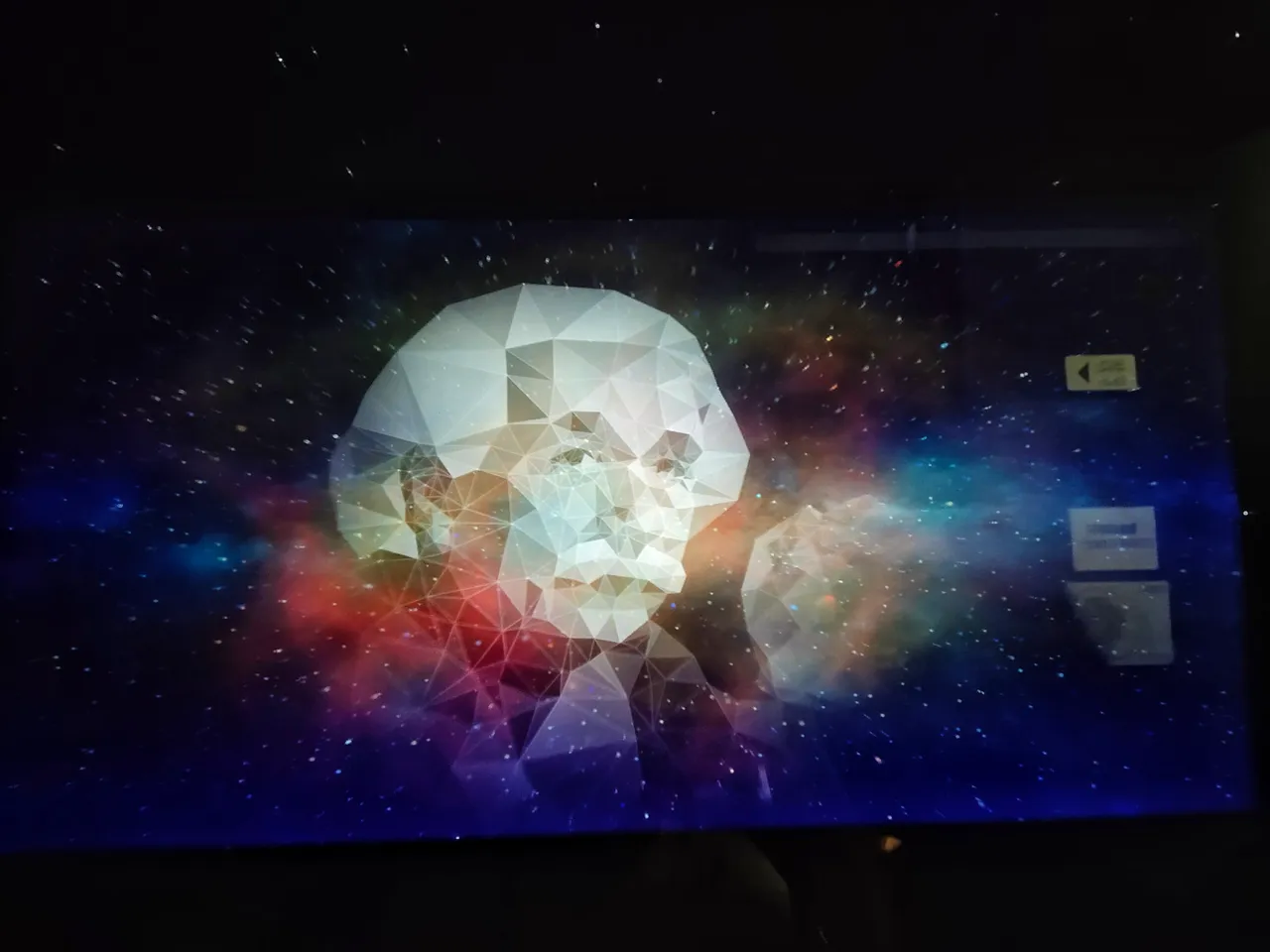
I enjoyed this Space exploration and learn a lot about Astronomy and Space Science. There are still other parts in this museum that I'll show in my next travel blog. You'll see astronauts, spaceships, and others!
That's all for now. And since it's humpday, I would like to submit this as my entry for this week's #WednesdayWalk initiated by @tattoodjay in collaboration with #MakeMeSmile challenge.
You can watch a short clip of this museum here.
I hope you enjoyed it. Thanks for stopping by.
(All photos are mine)

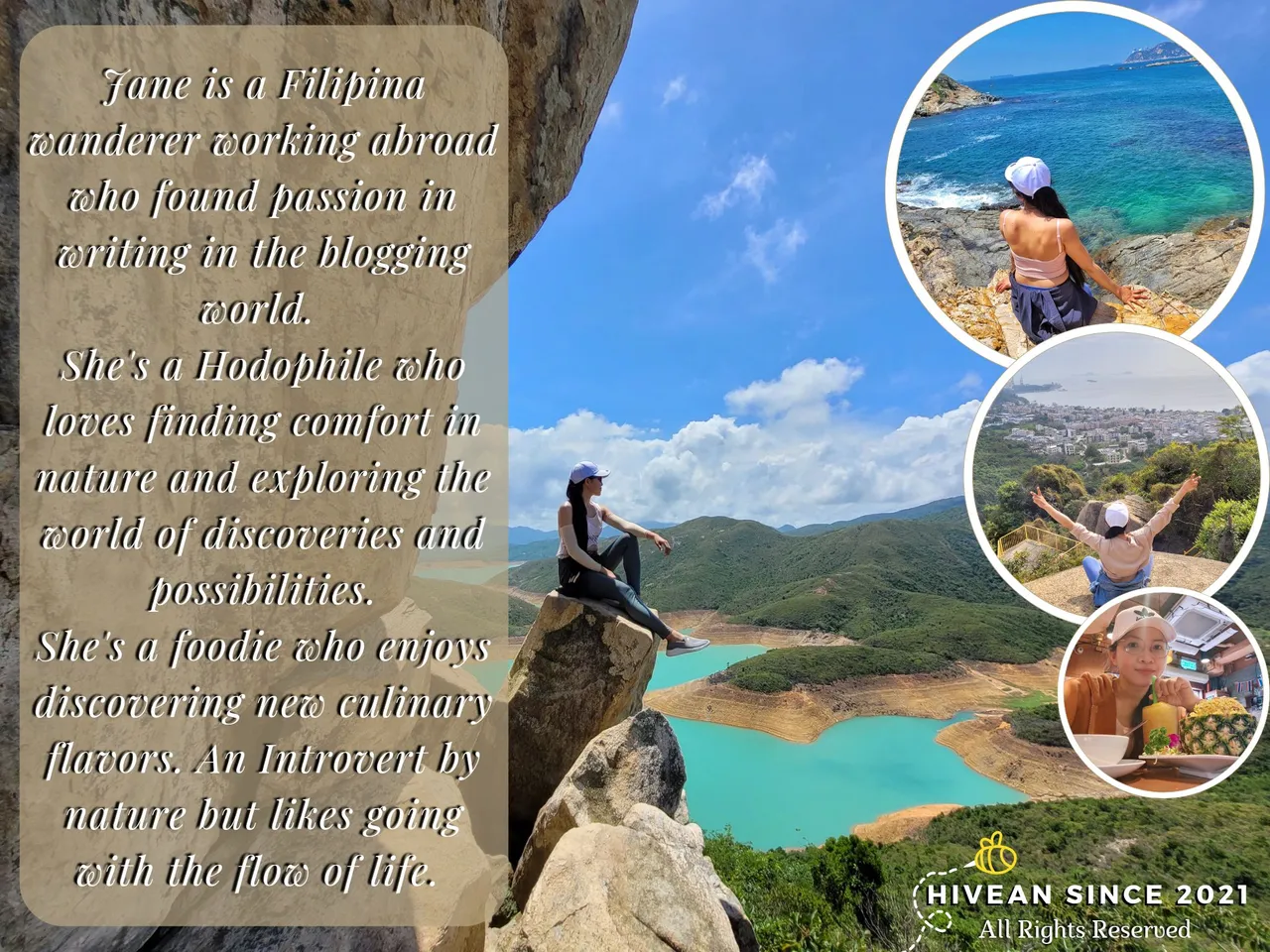
Join her on her quest for self-discovery and wanderlust. If you like her content, don't hesitate to upvote, drop a comment, reblog, and follow for more wonderful adventures. |
|---|
You can also reach me on my socials and let's be connected:
